Northeast-facing gardens reduce the chances of sun damage because the plants receive light for 3-6 hours only.
The right type of plants can be paired with colorful garden furniture to brighten up your shaded garden or backyard.
Before planning or planting anything, it’s important to know which spots in your garden receive sunlight and at what time of the day.
North-facing gardens are shaded for the most part of the day, but a northeast-facing garden will receive sunlight in the morning.
Shaded gardens are generally cooler and the soil is moist for an extended period according to the University of Minnesota.
The following plants can be added to such gardens:
- Plants that can handle bright light in the morning
- Plants that are sensitive to direct afternoon light
- Shade-loving varieties that thrive under partial shade
- Plants that need to stay moist for longer
30 Plants for Northeast Facing Gardens
- Coral Bells
- Black Bugbane
- Hellebores
- Dianthus
- Violets
- Fuschia
- Agapanthus
- Astilbe
- Pansies
- Snapdragon
- Veronica
- Trillium
- Flowering Quince
- Lily of the Valley
- Wax Begonia
- Geraniums
- Ferns
- Chamomile
- Snowdrops
- Hydrangea Integrifolia
- Impatiens
- Mint
- Lettuce
- Kale
- Spinach
- Oregano
- Broccoli
- Carrots
- Cabbage
- Plum Trees
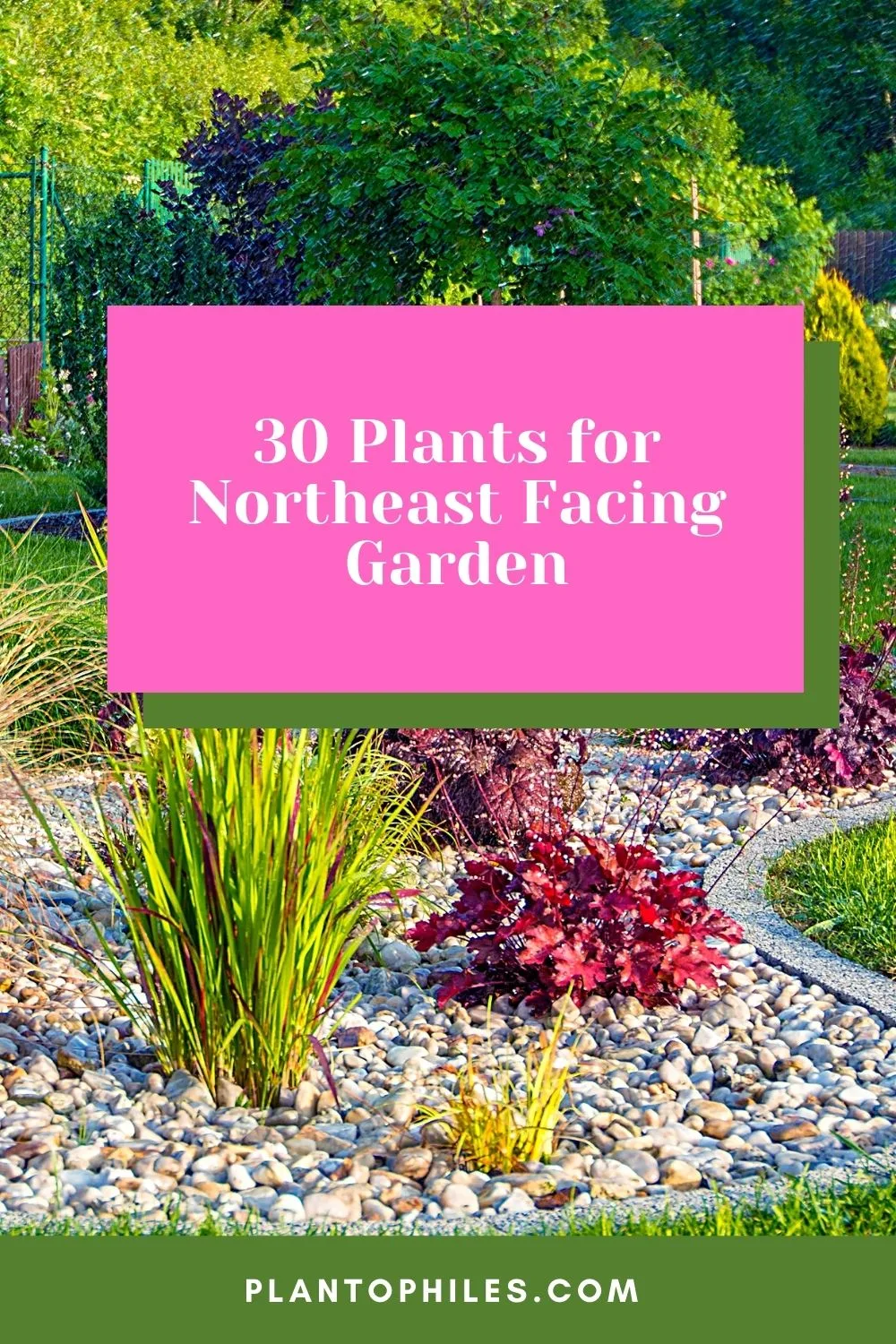
30 Plants for Northeast Facing Garden
Table of Contents
Plants for Northeast Facing Garden
1. Coral Bells
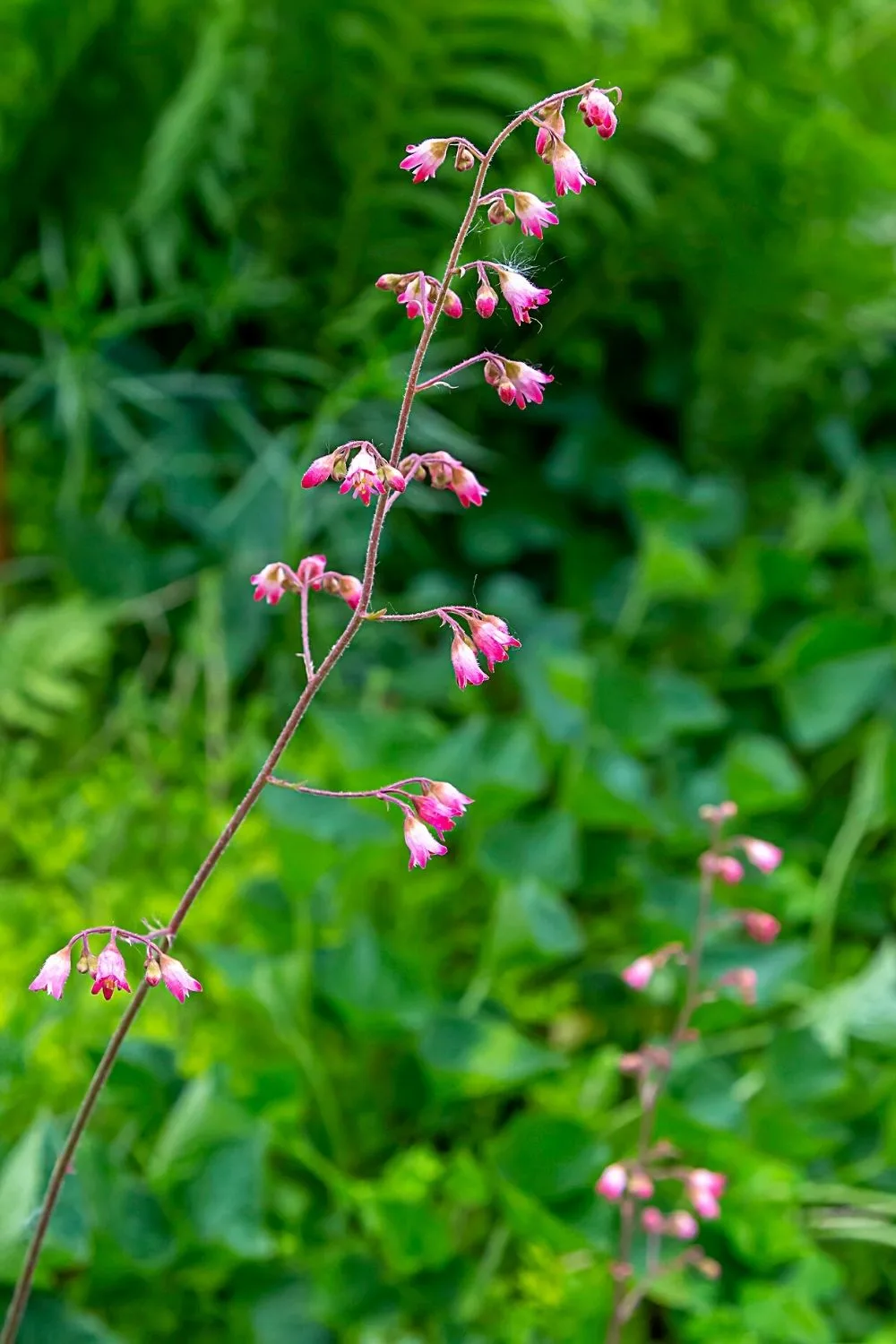
The Coral Bells’ tiny blooms attract beneficial insects to your garden
The tiny bell-shaped blooms will appear in spring and summer, attracting lots of insects to your garden.
The original variants have green leaves, but the newer versions have leaves in shades of pink, purple, gold, etc.
Plant them in groups with other companions to create a stunning flower arrangement in your garden.
- Family: Saxifragaceae
- Other names: Alum root
- USDA hardiness zones: 4-8
- Light: partial shade or full sun
- Soil: avoid using heavy, clayey soils; otherwise, amend it to make it porous and well-draining
- Common issues: downy mildew, powdery mildew
- Growth rate: moderate
2. Black Bugbane
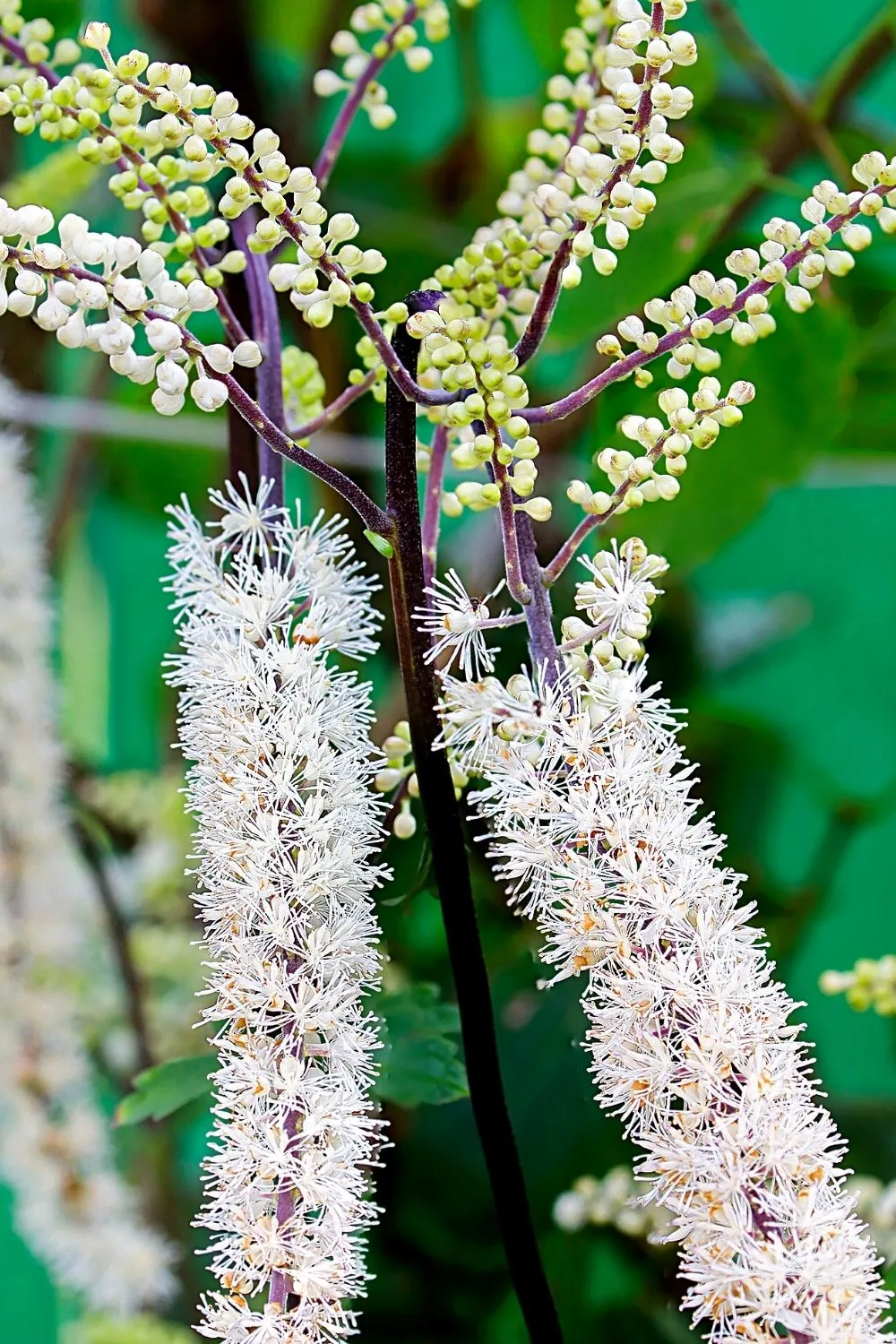
The Black Bugbane’s dark-colored makes it stand out in a northeast-facing garden
This beauty will stand out among other lush green plants in your Northeast facing garden with its dark-colored foliage.
The leaves have ruffled edges in shades of copper and purple.
The fluffy flowers stand tall above the dark leaves in a beautiful white color during summer. This plant will resist certain pests in the outdoor garden.
The flowers are useful in decorative arrangements.
- Family: Ranunculaceae
- Other names: Fairy Candle, Black Cohosh
- USDA hardiness zones: 3-9
- Light: full or partial shade
- Soil: needs loamy, moist soil
- Common issues: leaf spot, rust
- Growth rate: slow-growing
3. Hellebores
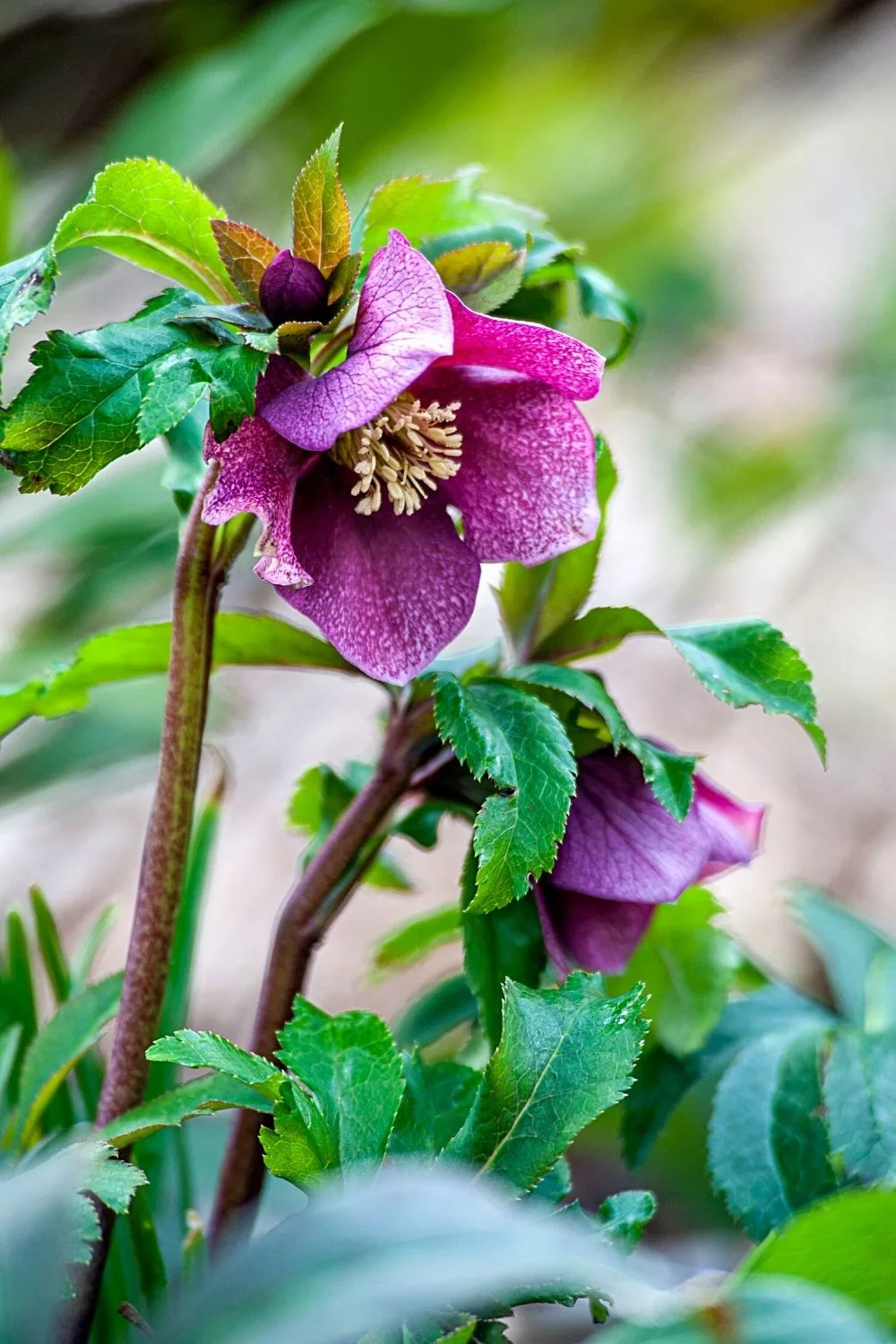
Hellebores, despite its evergreen foliage, isn’t good to be near dogs and cats
The evergreen deep green foliage on this plant will maintain its beauty throughout the summer season. Hellebores is a plant native to the Middle East and has palm-like leaves.
Bear in mind that the foliage and flowers are toxic for cats and dogs.
The best feature of Hellebores is that they enjoy growing under shaded locations where most other garden plants struggle to survive.
However, wait for at least two seasons before they begin blooming.
- Family: Ranunculaceae
- Other names: Lenten or Christmas Rose
- USDA hardiness zones: 3-9
- Light: enjoys being under the sun in winter and a shaded spot in summer
- Soil: well-draining soil that stays evenly moist without trapping excess water
- Common issues: aphids, leaf spots, mildew
- Growth rate: slow grower
4. Dianthus
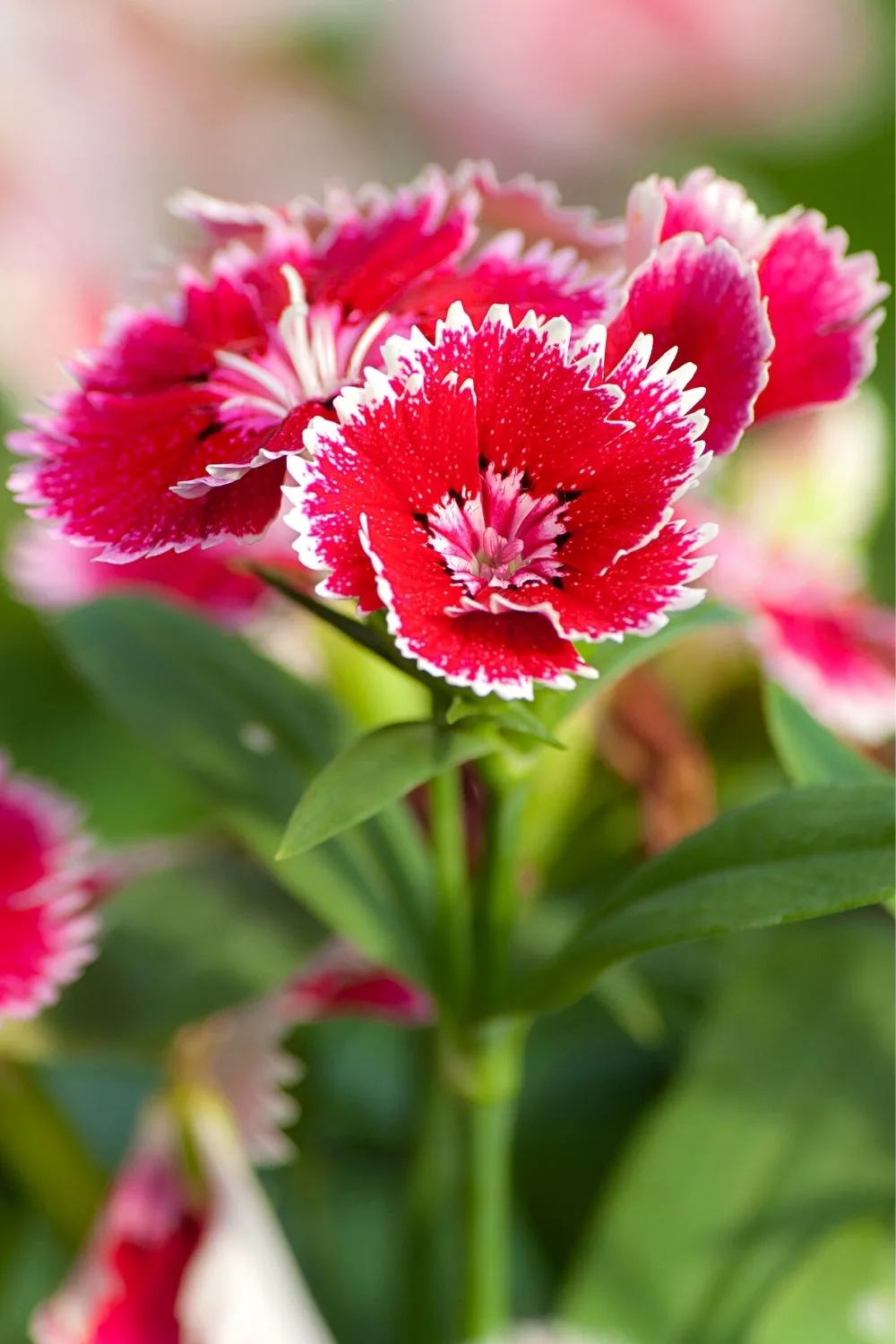
Dianthus is a fast blooming plant that will grace your northeast-facing garden with blooms from spring to fall
This plant has grass-like bluish-grey leaves with white, pink, purple, and red flowers. This is a fast bloomer, and the blooming continues from the spring to fall seasons.
The flowers have a pleasant fragrance that attracts beneficial insects.
Since it’s not cold hardy, outdoor plantation should be done after the risk of frost damage is over.
You can check out what temperature is considered too cold for houseplants to guide you on choosing an area to plant your Dianthus in.
Dianthus can be added to a rock garden or borders. Make sure you maintain adequate spacing to allow the plants to spread out.
- Family: Caryophyllaceae
- Other names: Pink, Carnation, Sweet William
- USDA hardiness zones: 3-9
- Light: full sun for pretty blooms but can tolerate partial shade
- Soil: avoid heavy soils because this plant needs good drainage
- Common issues: vascular wilt
- Growth rate: fast-growing
5. Violets
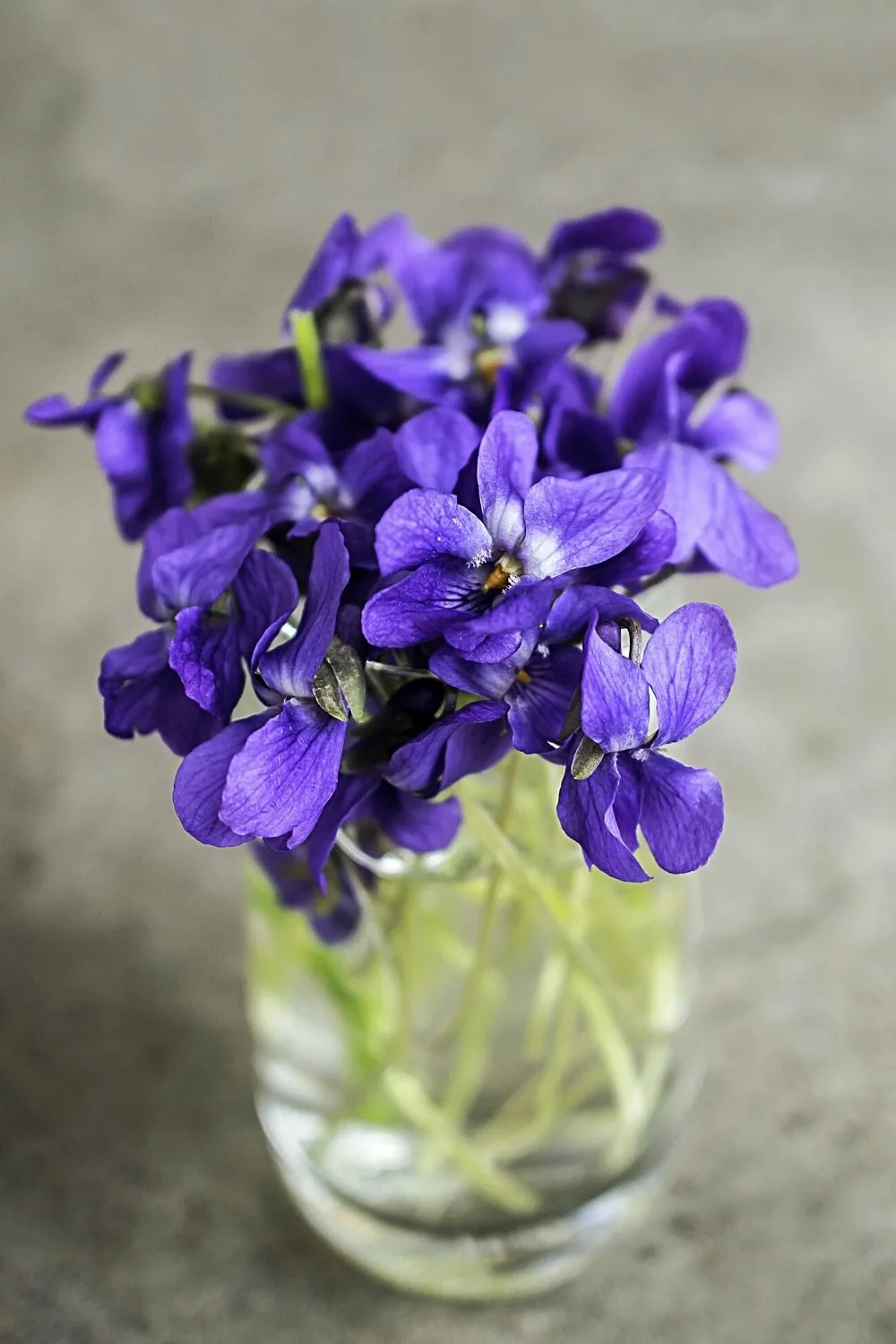
If you care for your Violets properly, they’ll bloom in your northeast-facing garden all year-round
These compact garden plants are distinguished by their fuzzy deep green leaves and colorful blooms in hues of purple, blue, and white.
You can choose any plant from the miniature, standard and large categories depending on the size of the plant.
With the right care, these plants might continue blooming throughout the year.
- Family: Violaceae
- Other names: Bush Violets, Persian Violets, etc
- USDA hardiness zones: 11-12
- Light: bright, indirect light
- Soil: African Violet soil mix or well-draining potting soil
- Common issues: powdery mildew and common houseplant pests
- Growth rate: seedlings will take about 10 weeks to grow
6. Fuchsia
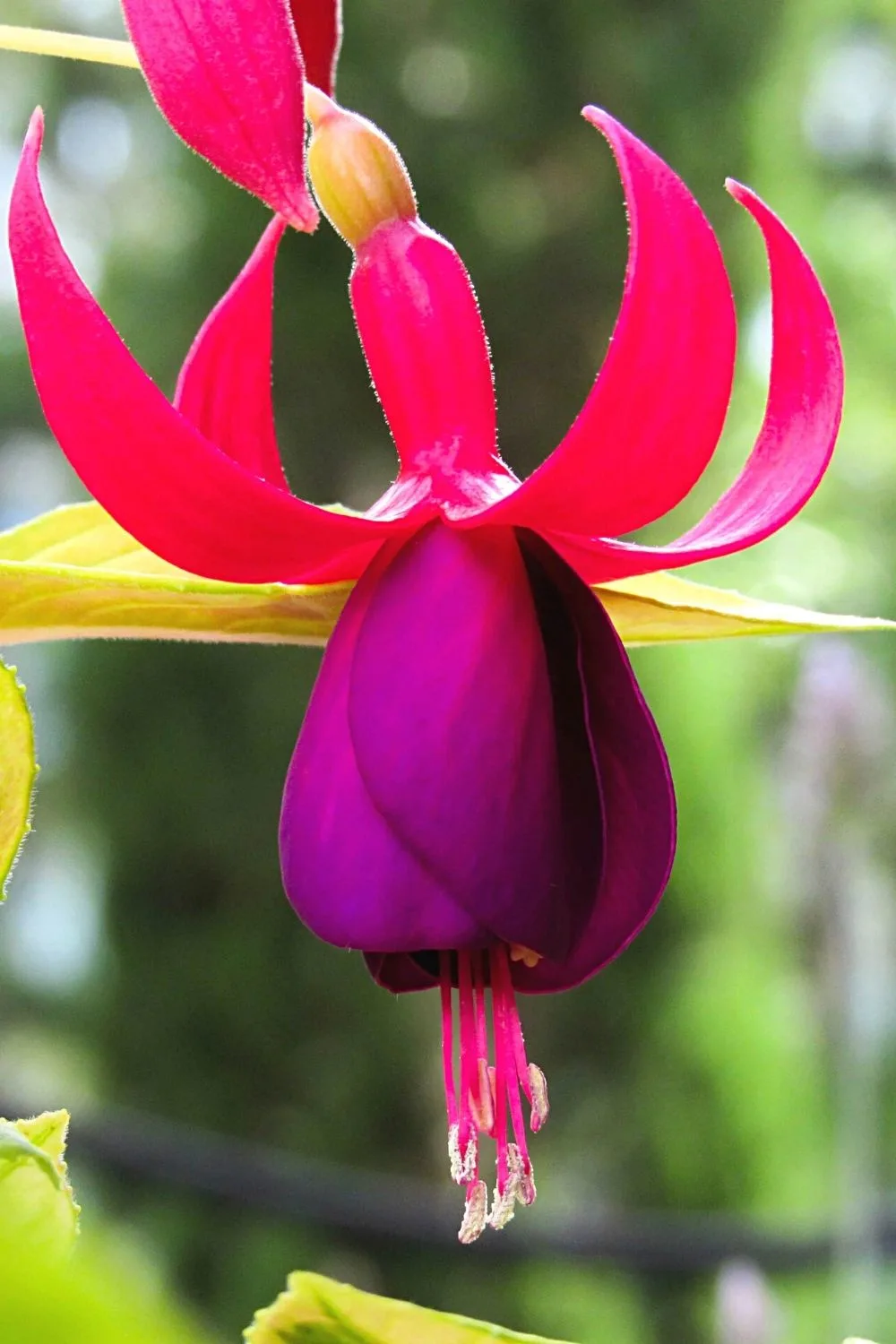
Fuschia is a small shrub whose flowers hang like trailing stalks on your northeast-facing garden
This plant is for any gardener who likes bright-colored and unique-looking flowers.
The teardrop-shaped flowers in shades of pink, burgundy, red and purple will hang on the trailing stalks.
This plant is cold-sensitive; therefore, plant it in the garden only after the weather is warm enough. This tiny shrub will reach 2 feet as its maximum height.
- Family: Onagraceae
- Other names: Hummingbird Fuchsia
- USDA hardiness zones: 10-11
- Light: needs partial or deep shade where it’s protected from the harsh afternoon sun
- Soil: a combination of organic matter, compost, and peat moss
- Common issues: spider mites, aphids
- Growth rate: moderate growth
7. Agapanthus
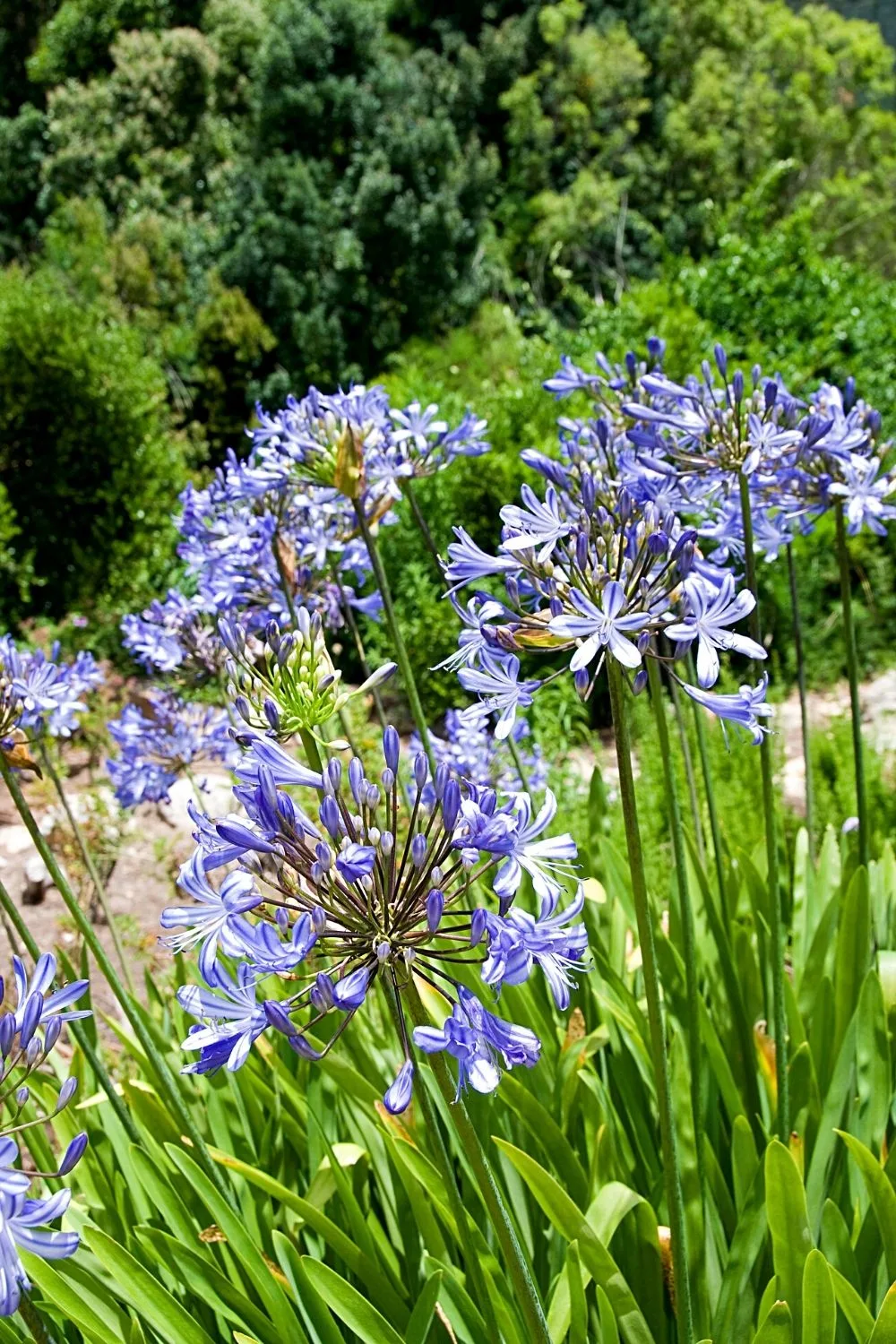
Though it takes 2 years for the Agapanthus to reach its maximum size, it’s worth the wait once they start blooming in your northeast-facing garden
This plant has a delicate appearance, but it’s a tough one for outdoor gardening.
This easy-care plant will produce clusters of exotic flowers (shades of white, blue, purple) as well as shiny green leaves.
It takes at least two years to reach the maximum size, but everything about this flowering species is worth the patience.
- Family: Amaryllidaceae
- Other names: Lily of the Nile, African Lily
- USDA hardiness zones: 9-11
- Light: need partial shade in hot climates
- Soil: clayey or sandy soil
- Common issues: leaf spots, root rot
- Growth rate: moderate to fast growth
8. Astilbe
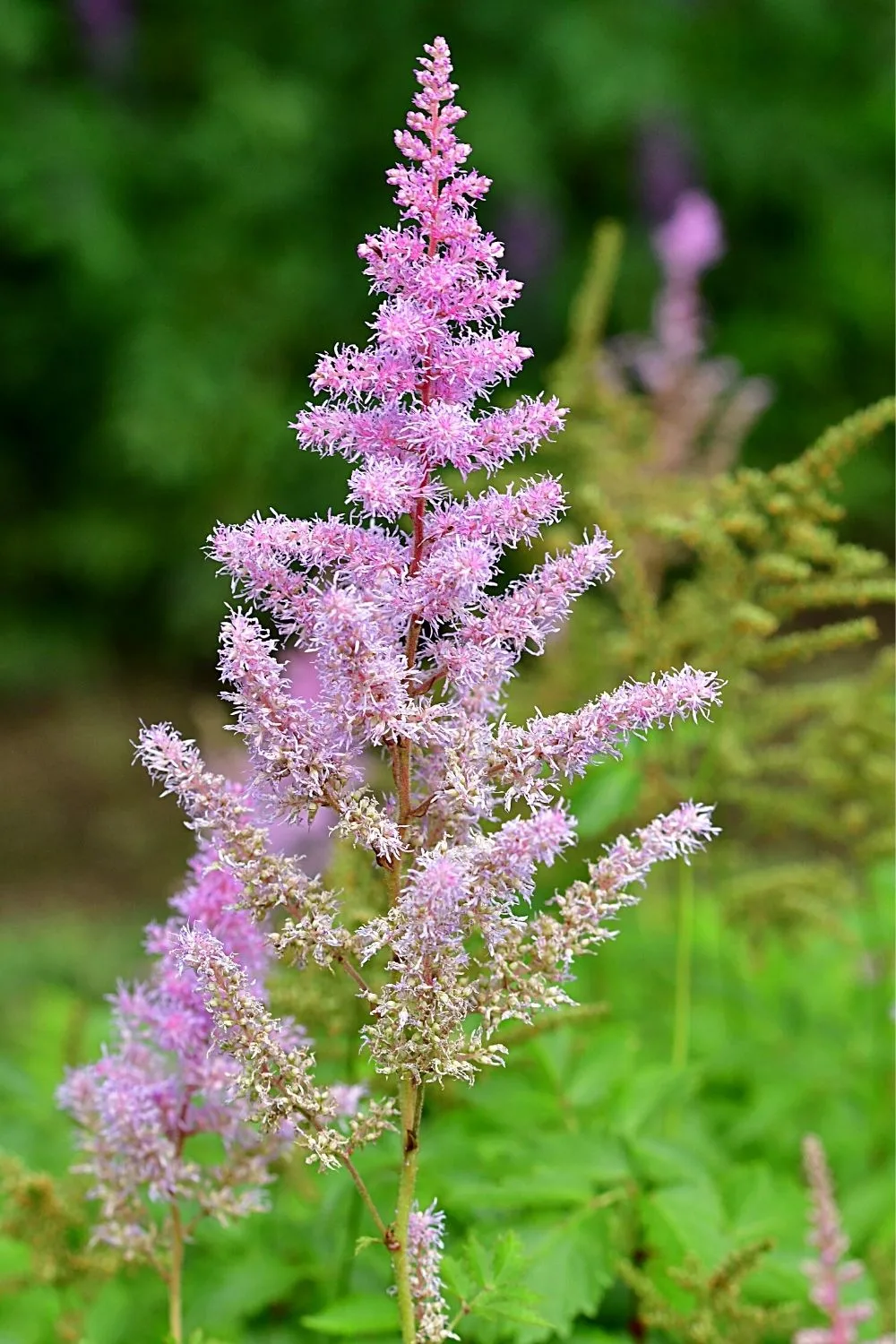
Astilbe can be added to moist areas of your northeast-facing gardens for added pop of color
These plants will produce brightly colored spikey flowers, and the foliage resembles ferns.
This shade-tolerant variety will continuously bloom from late spring to late summer.
For some versions, the unique flower clusters can reach a maximum height of 2 ft. These can be added to the moist areas of the garden with little sunlight for a pop of bright colors.
These flowers will not only attract beneficial insects but also can also be used in flower arrangements.
- Family: Saxifragaceae
- Other names: False Goat’s Beard
- USDA hardiness zones: 3-8
- Light: partial or fully shaded spots
- Soil: humus-rich garden soil that is fertilized regularly
- Common issues: bacterial leaf spotting, powdery mildew
- Growth rate: slow grower
9. Pansies
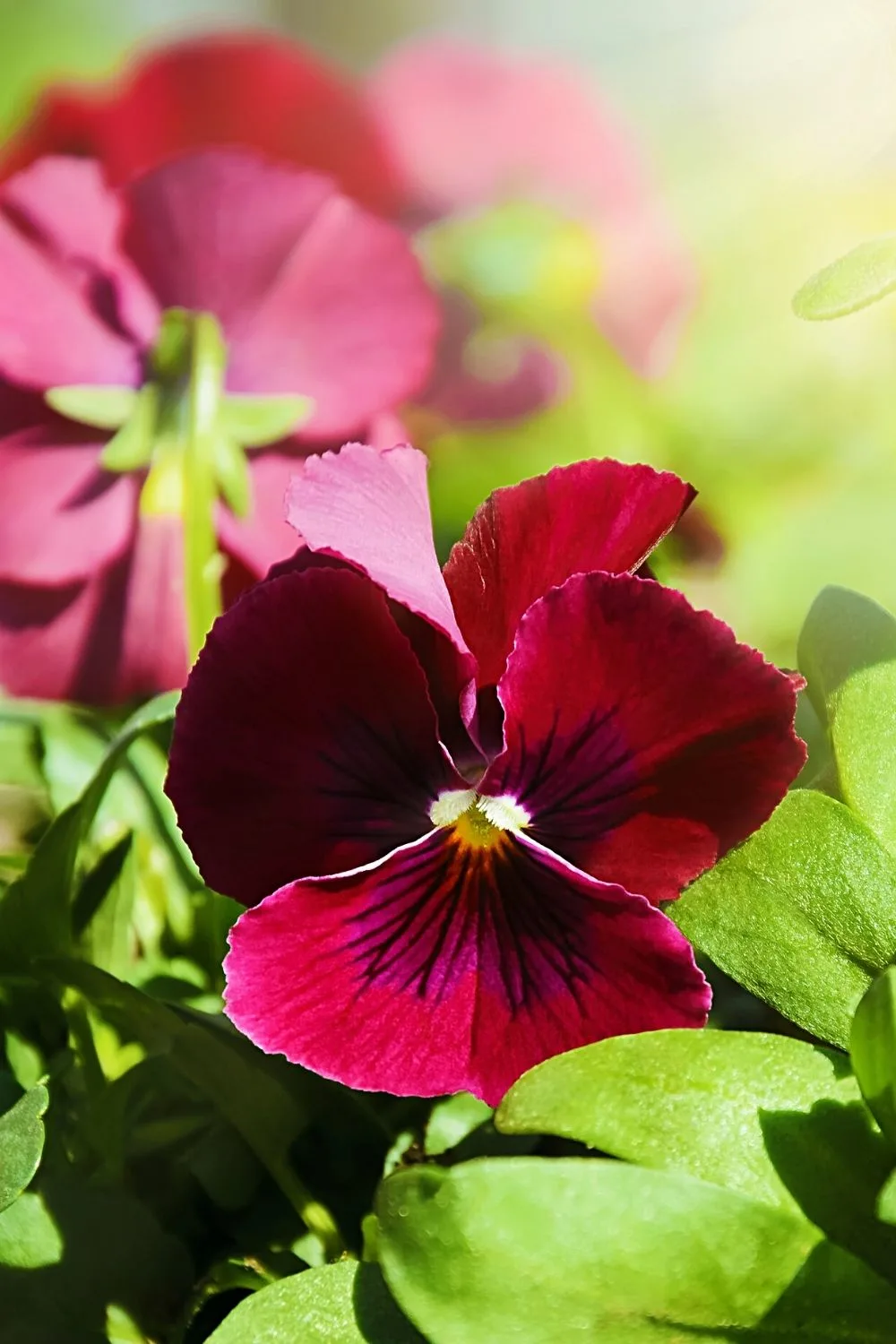
Pansies are cool weather outdoor plants that you can grow in your northeast-facing garden
This is a common cool weather outdoor plant. You will see them growing in every other landscape and border, and you can also plant them as a ground cover.
They will bloom in a variety of shades and patterns.
The stunning flowers are cold hardy and will survive through the harsh fall and winter months. I would recommend buying young plants for early blooms.
The best part is that Pansies are edible and that you can add them to a salad for a minty flavor.
- Family: Violaceae
- Other names: Garden pansy
- USDA hardiness zones: 7-11
- Light: bloom under partial or full sun
- Soil: fast-draining acidic soil
- Common issues: mosaic virus, gray mold, mildew
- Growth rate: fast-growing
10. Snapdragon
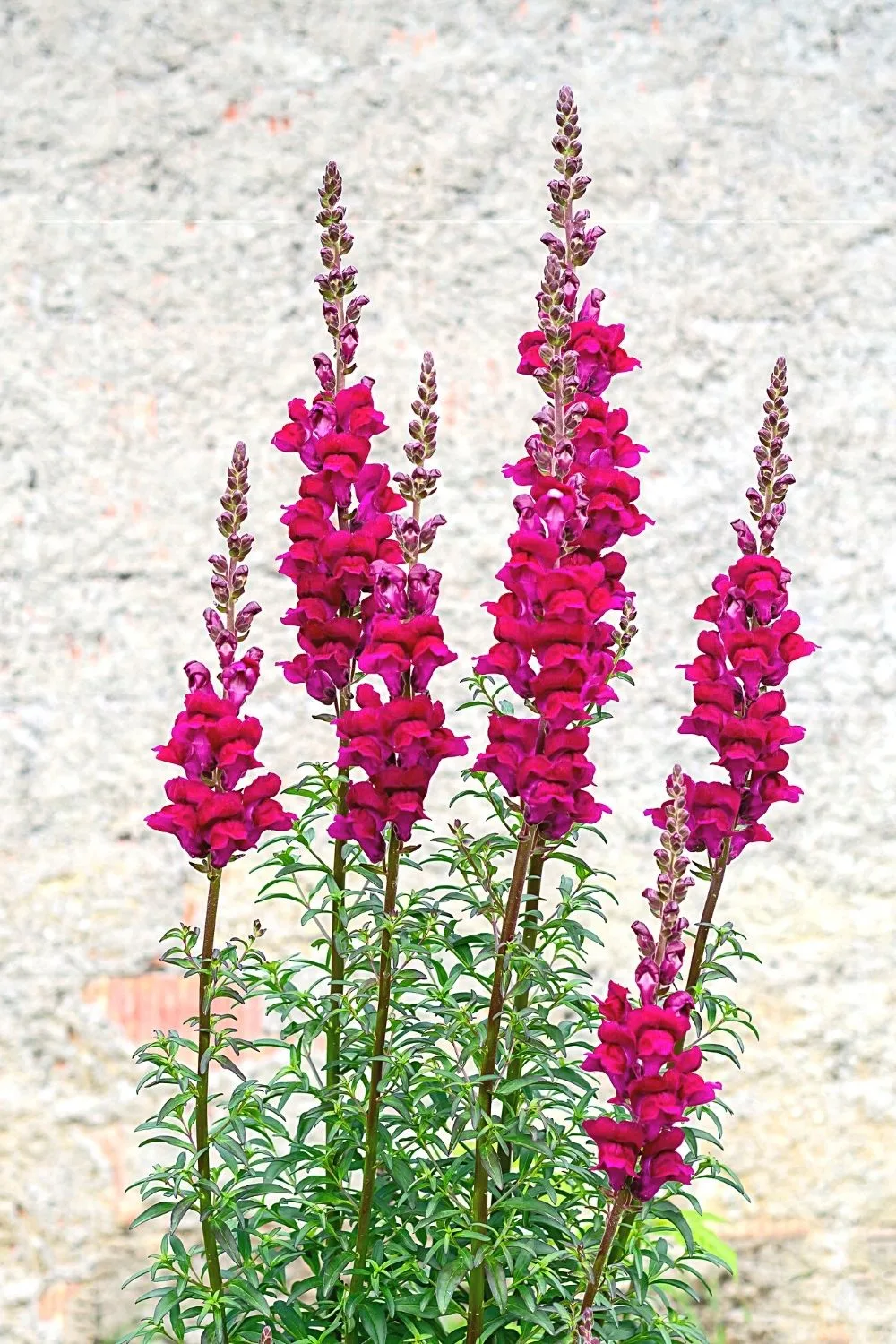
Snapdragon prefers to bloom in cold temperatures for it to bloom, hence, a perfect bloom to grow in your northeast-facing garden
Snapdragons are a top pick for border gardens with lanceolate leaves and colorful blooms.
These plants bloom heavily in cold weather, but if you keep the soil regularly moist in hot weather, they will continue blooming throughout summer.
This plant prefers cold temperatures for blooming. Therefore, it’s an excellent addition to outdoor gardens in cold regions.
- Family: Plantaginaceae
- Other names: Antirrhinum Majus
- USDA hardiness zones: 7-11
- Light: needs partial shade or full sun exposure
- Soil: well-draining soil with a pH of 6.2-7.0
- Common issues: rust fungus, leaf spots
- Growth rate: fast-growing once the seedlings have developed
11. Veronica
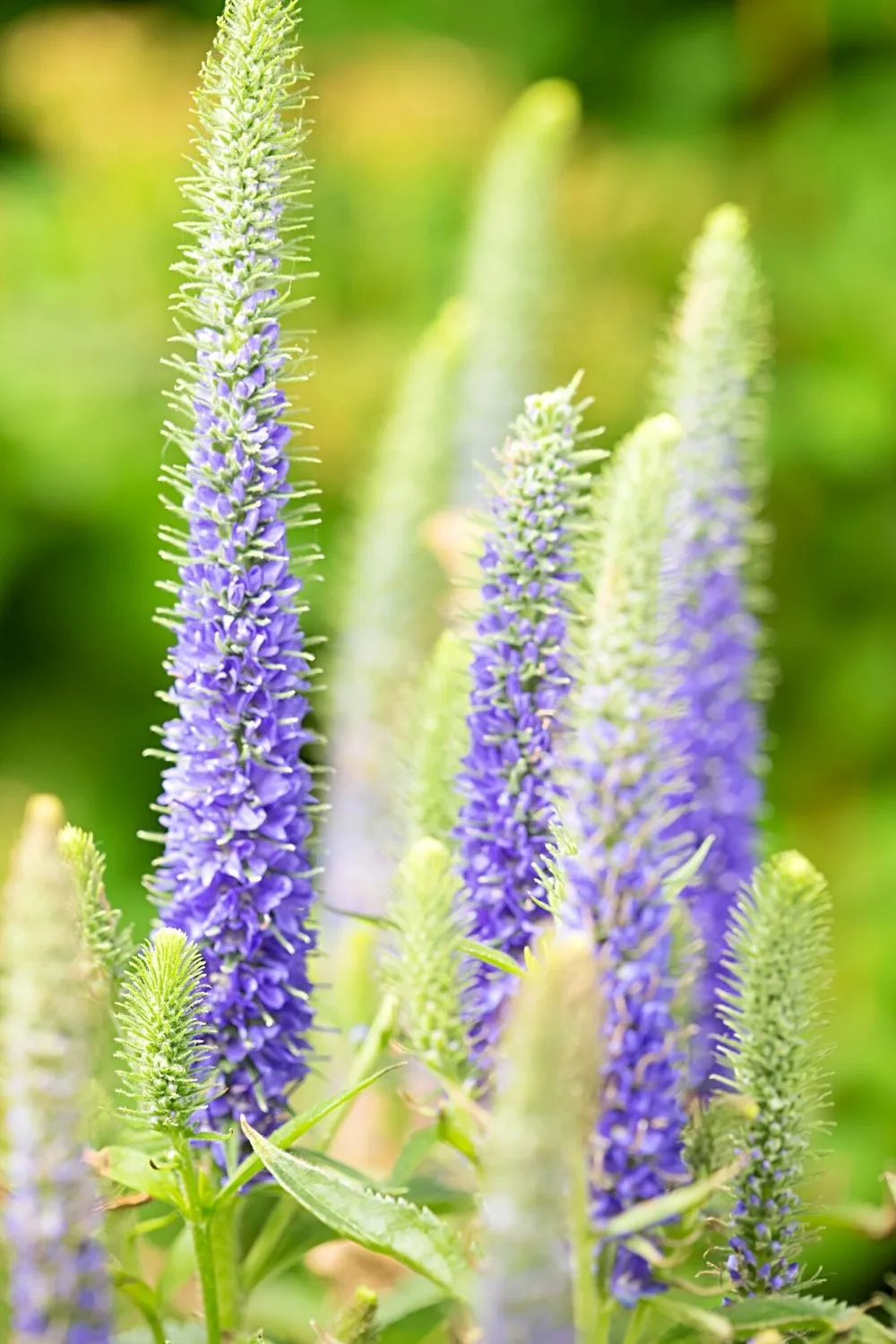
Veronica is a vibrant flowering plant perfect for busy gardeners looking to add some pop of color in their northeast-facing gardens
This vibrant flowering plant is for busy gardeners. This is a tough plant since it can grow in a variety of soil conditions and withstand neglect in terms of watering.
The low-growing ground cover varieties from this group grow best in pots, borders, or rock gardens. The taller varieties will bloom in summer, whereas the ground covers will bloom in spring.
Therefore, you can add multiple variants to keep your garden blooming during the spring and summer seasons.
I personally like the spikey flowers in vibrant shades of blue and purple. This is a pet-friendly garden plant.
- Family: Plantaginaceae
- Other names: Speedwell, Gypsyweed
- USDA hardiness zones: 3 – 9
- Light: tolerates partial shade but thrives under full sun
- Soil: well-draining, fertile loamy soil mixture
- Common issues: leaf spot and rust
- Growth rate: fast-growing perennial plants
12. Trillium
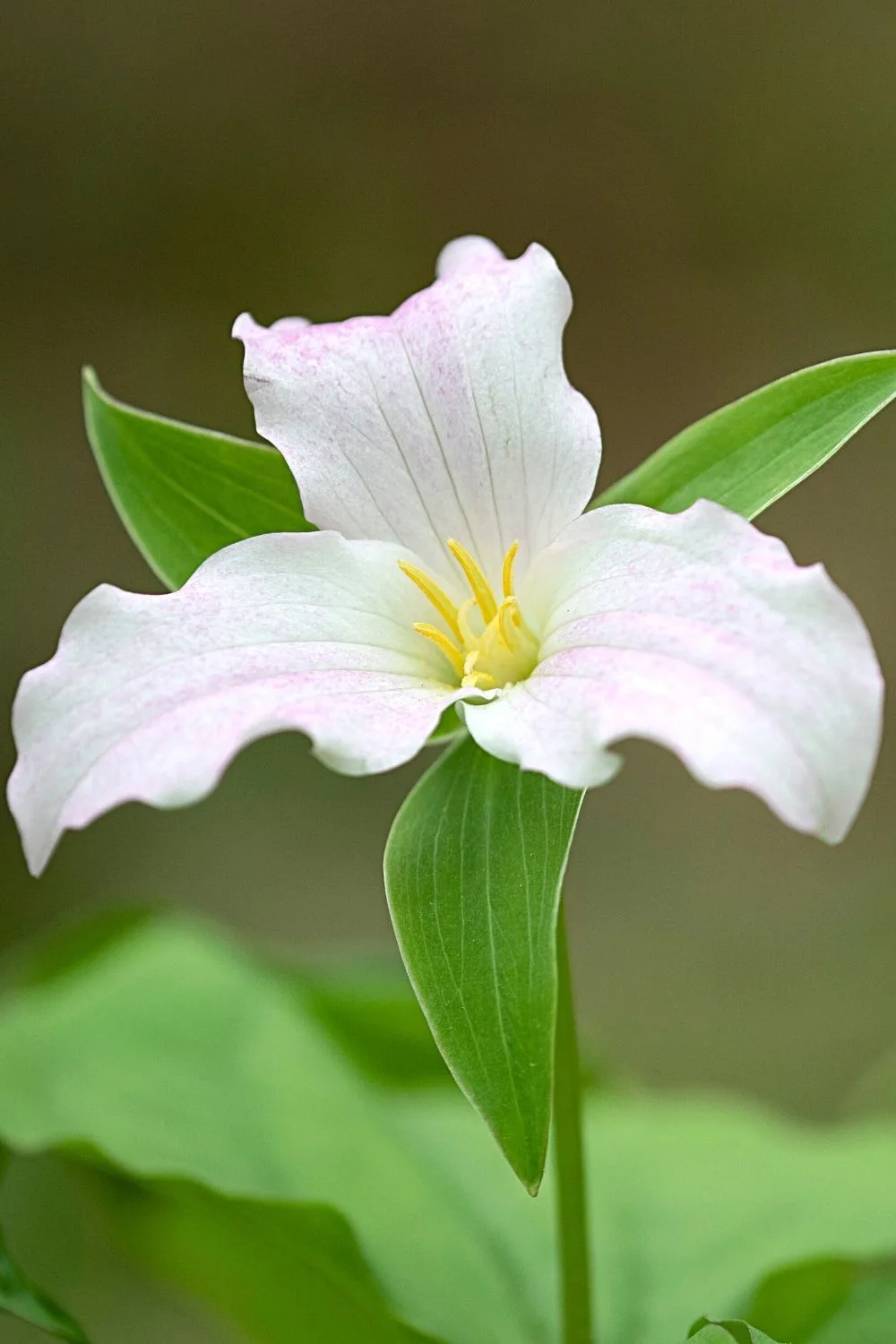
Trillium thrive in a wide range of growing conditions, hence, it’s a perfect fit for your northeast-facing garden
This is a group of a few spring-flowering perennials that thrive in a range of growing conditions.
The flower color will vary based on the variety you grow, but each flower has three petals and three leaves.
Popular varieties for shaded gardens in this category are Great White Trillium (white and pink petals), Toadshade Trillium (reddish-purple petals), Yellow Trillium, etc.
- Family: Melanthiaceae
- Other names: Wakerobin, Birthroot
- USDA hardiness zones: 4-8
- Light: partial or full shade
- Soil: well-draining garden soil rich in nutrients
- Common issues: leaf spot, snails, and slugs
- Growth rate: slow-growing
13. Flowering Quince
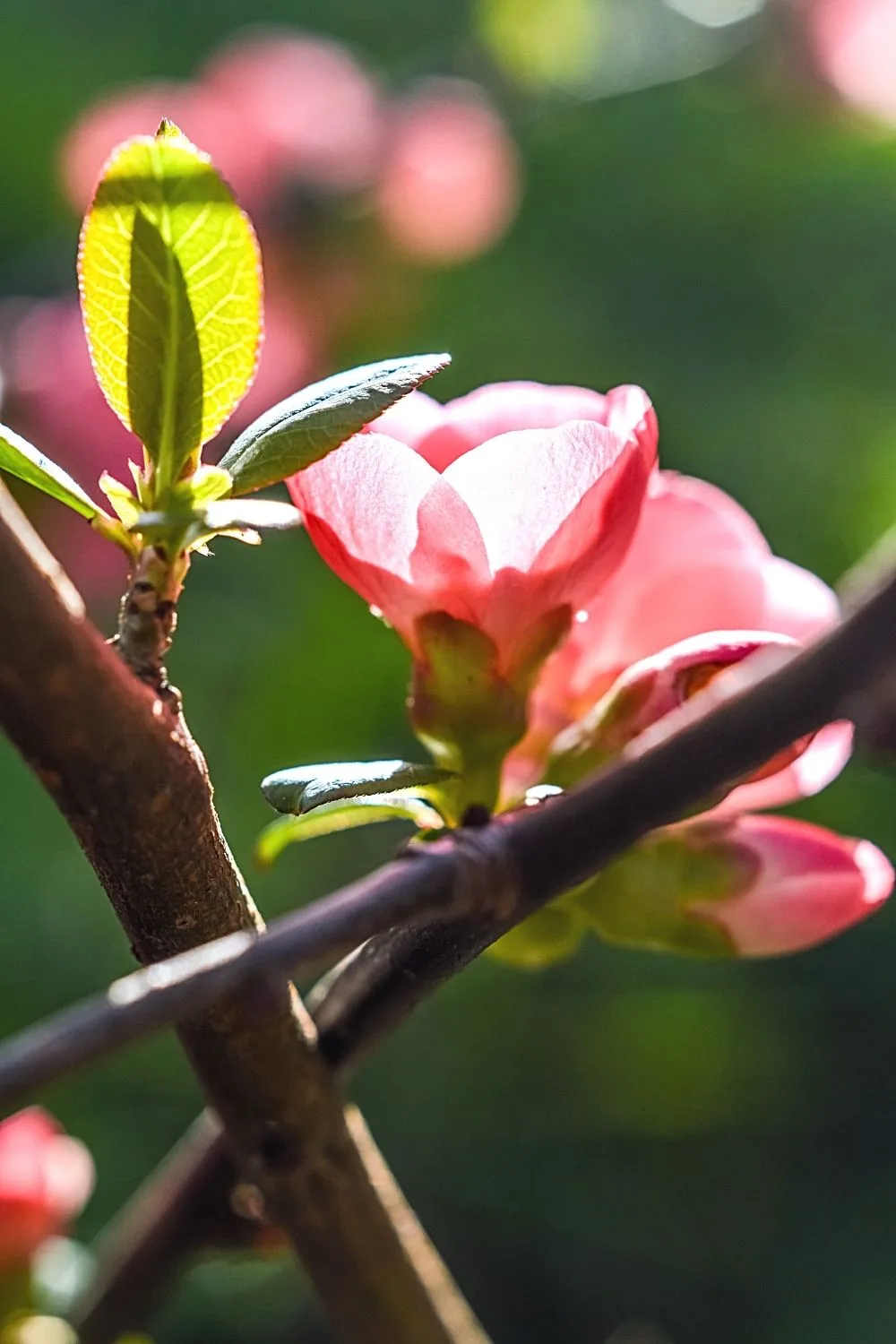
The Flowering Quince’s blooms only last for 2 weeks before transforming into a fruit, a perfect addition to your northeast-facing garden
This flowering shrub has a messy growth with green leaves and colorful orange, red, white, and pink blooms.
The five-petal blooms will only last for a period of two weeks and transform into a fruit. This short display of colors is the true essence of the spring season.
You can use this shrub to decorate the borders of the garden or near fences.
Once mature, this plant will reach a maximum height of 10 ft, so you can also let it climb an empty wall.
- Family: Rosaceae
- Other names: Chaenomeles Speciosa
- USDA hardiness zones: 4-9
- Light: partial sunlight or full sun
- Soil: loamy soil with excellent drainage
- Common issues: fungal leaf spot and scabbing
- Growth rate: moderate
14. Lily of the Valley
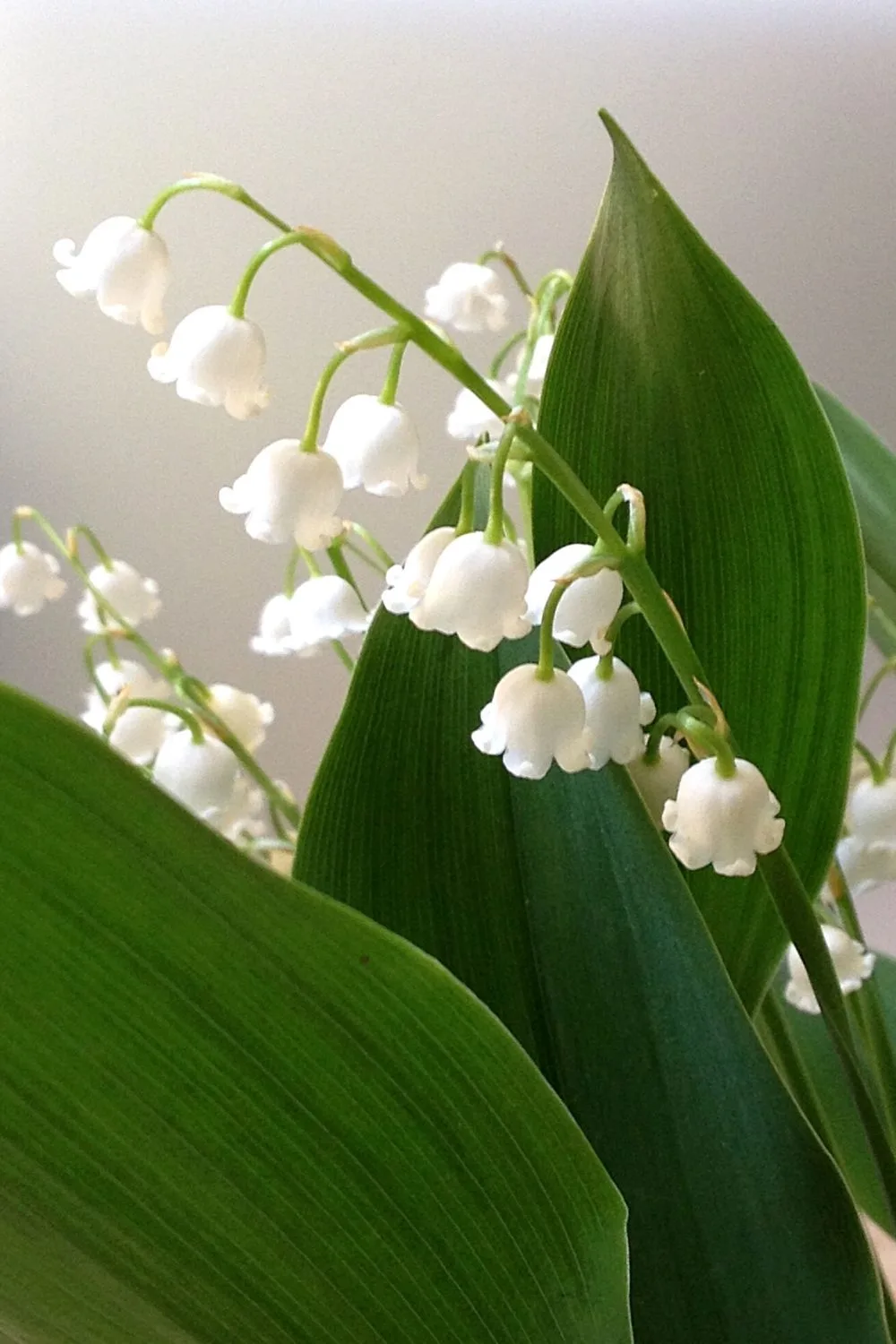
The Lily of the Valley’s cluster of white blooms is a perfect addition to your northeast-facing garden
The bell-shaped white blooms on this plant have a sweet scent. These flowers will grow in clusters on the long stalk.
The leaves are about 5-10 inches in length in a fresh green color.
This spreading garden plant will show up year after year and spread fast throughout the garden. It will stay close to the ground as it reaches a maximum height of 12 inches only.
This plant is poisonous; therefore, plant carefully if you have pets or children.
- Family: Asparagaceae
- Other names: Convallaria Majalis, Mayflower
- USDA hardiness zones: 3-8
- Light: keep it under partial shade for abundant blooms
- Soil: any soil with good drainage and high organic content
- Common issues: leaf spotting and weevil damage
- Growth rate: aggressive grower
15. Wax Begonia
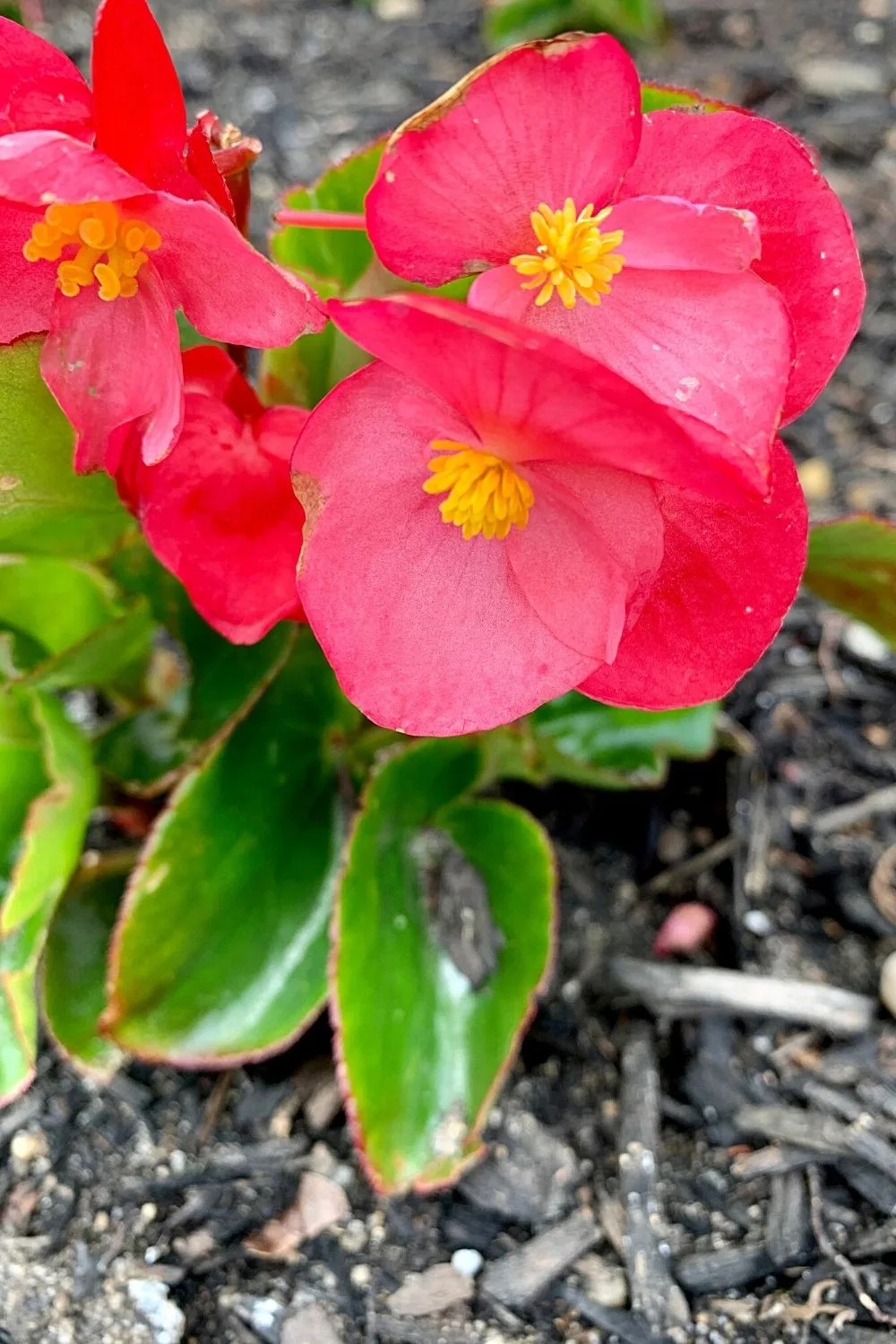
The Wax Begonia’s star-shaped blooms is great to be grown in northeast-facing gardens
Wax Begonias are well-known among landscapers, but now they have gained popularity among home gardeners as well.
They will adorn your garden with tiny star-shaped blooms in shades of red, pink, white, and even bicolors. The foliage also varies in hues of green and bronze.
You can combine the small (6-8 inches) and large (10-12 inches) variants for a dramatic view.
Wax Begonia can be used as an edging plant since they are bedding annuals.
- Family: Begoniaceae
- Other names: Begonia Semperflorens
- USDA hardiness zones: 10 to 11
- Light: need partial shade or full sun
- Soil: well-drained soil that stays moist with a pH of 5.5-6.5
- Common issues: stem rot, botrytis, and powdery mildew
- Growth rate: Seedlings grow fast
16. Geraniums
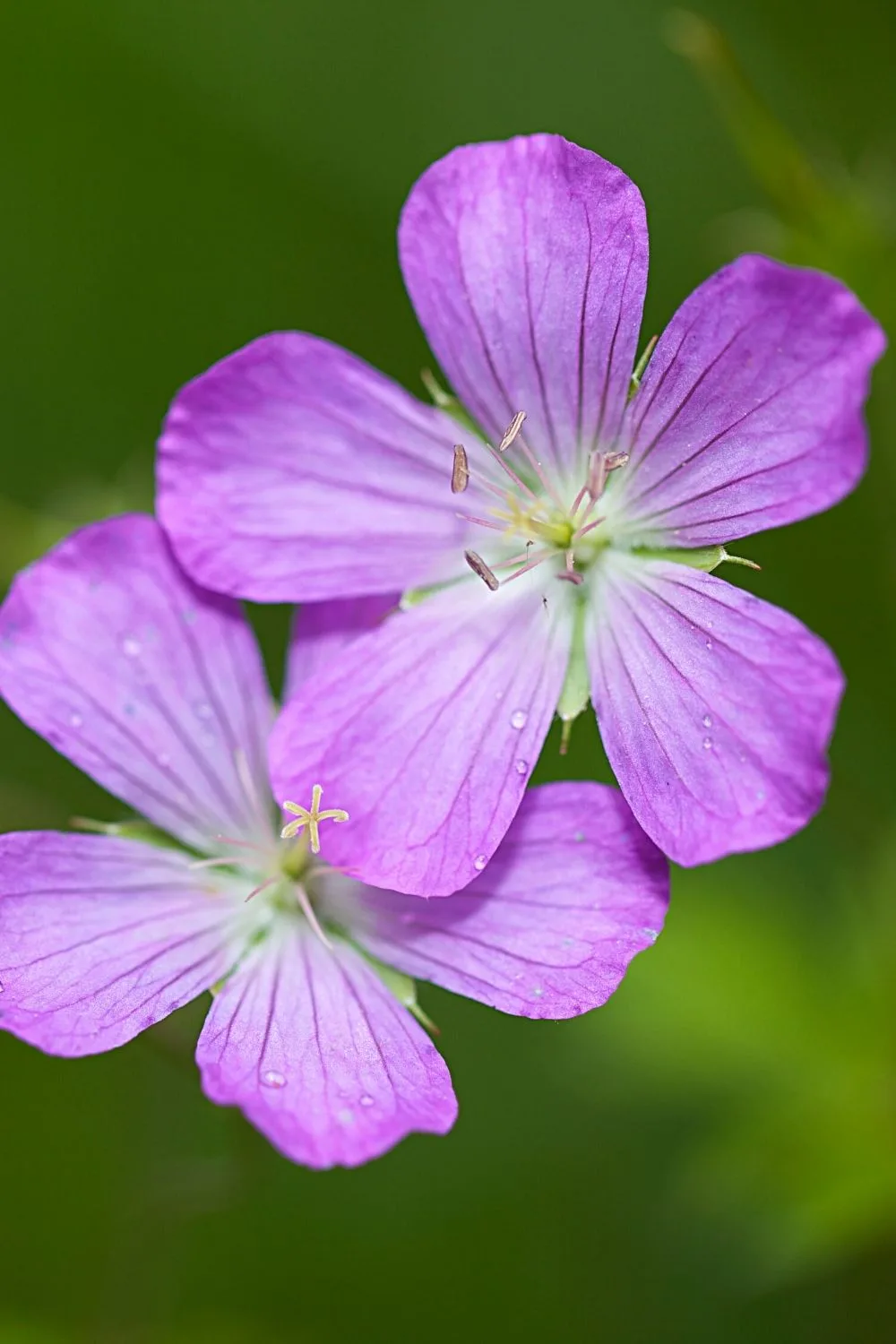
To encourage your Geraniums to bloom in your northeast-facing garden, perform deadheading on them
If you want to encourage blooming, perform deadheading for faded flowers.
Some of the popular Geranium variants for shaded gardens are Sweet Heidy (bowl-shaped pinkish-purple flowers), Bevan’s variety (crimson-purple flowers), Bill Wallis (purplish-blue flowers), and Mayflower ( violet-blue flowers).
Blooming Geraniums will spread fragrance throughout your garden in the summer season.
- Family: Geraniaceae
- Other names: Cranesbills
- USDA hardiness zones: 10-11
- Light: few hours of morning sun with shade during the afternoon
- Soil: loose soil mix with perlite, peat, and compost
- Common issues: toxic for pets and children
- Growth rate: seedlings are slow-growing
17. Ferns
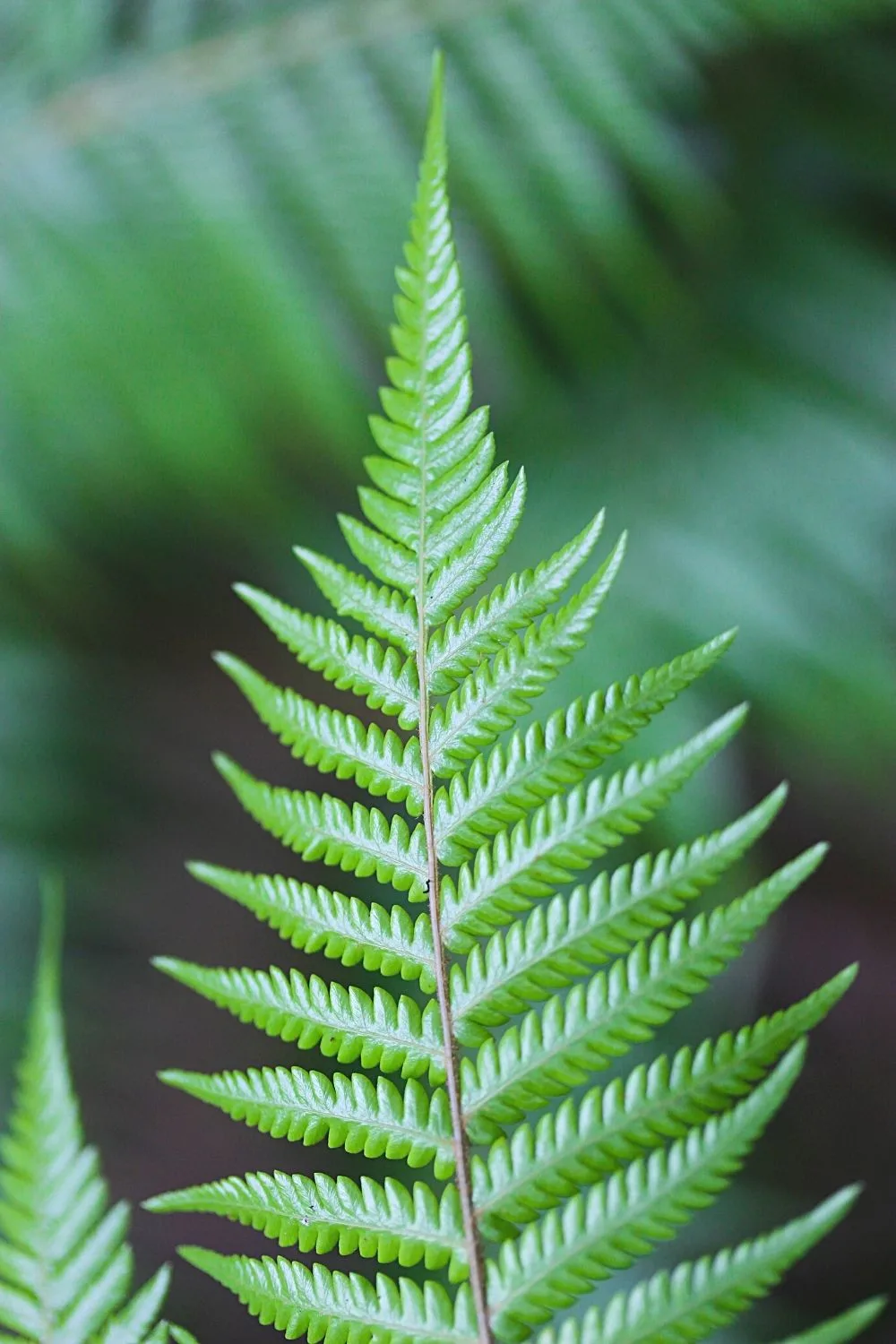
There are various types of Ferns that you can plant in your northeast-facing garden
With hundreds of species, this plant family has endless options for your outdoor garden.
Ferns can be used to brighten up any dark, damp spots of your garden which hardly receive any sunlight.
You can mix them with other flowering varieties from this list to create a stunning exhibit of flowers and foliage.
- Family: Polypodiaceae
- Other names: Holly Fern, Hay Scented Ferns, Lady Fern, Ostrich Fern
- USDA hardiness zones: varies depending on the fern variety you’re growing
- Light: thrive under partial or full shade
- Soil: rich soil with excellent drainage
- Common issues: slugs
- Growth rate: take several years to reach maturity
18. Chamomile
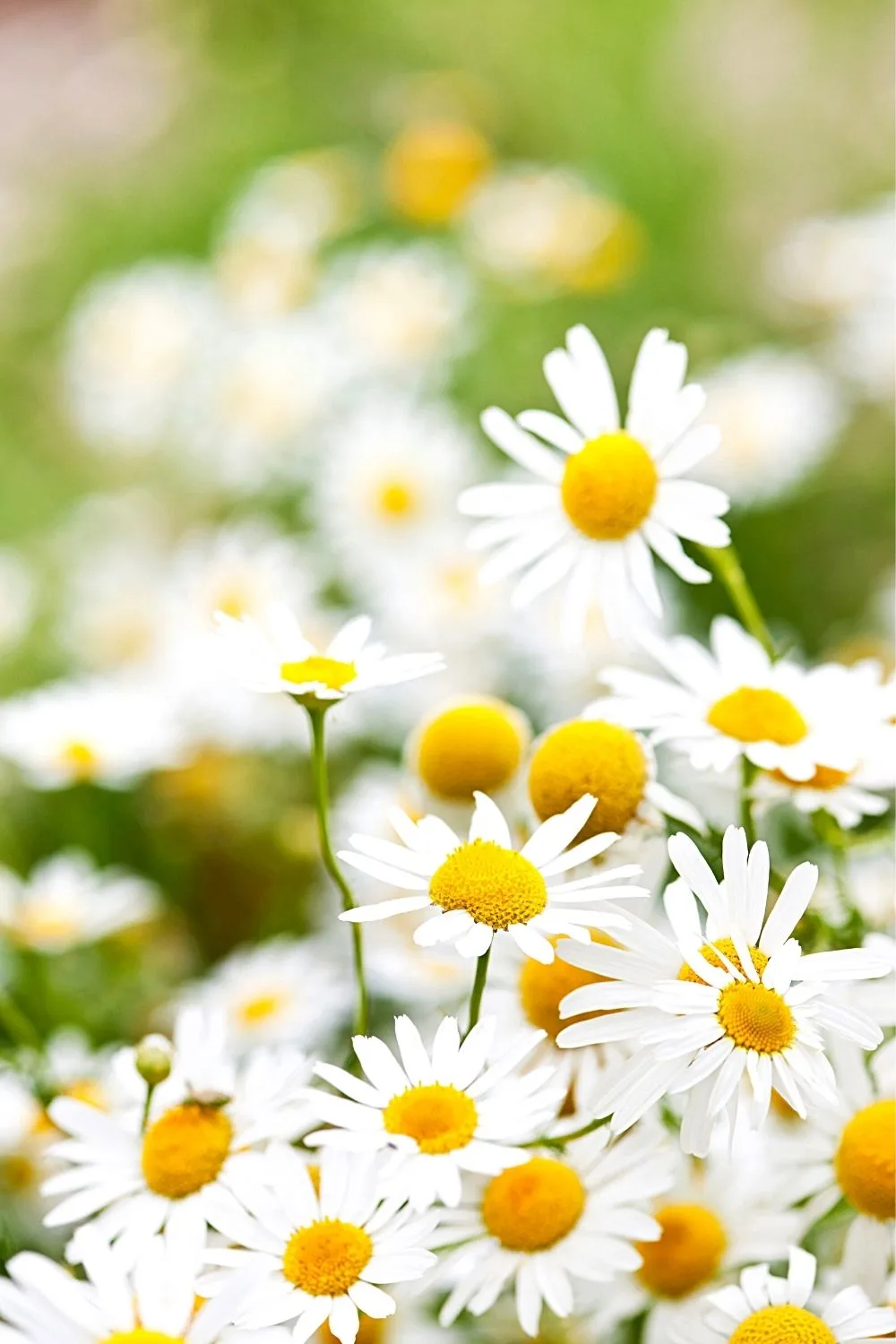
Chamomile is best as ground-cover plant for your northeast-facing garden
This is a ground cover plant used to cover a large area in the shaded region of the northeast-facing garden.
The daisy-like flowers are visually pleasing with a bright yellow center and white petals. The flowers and leaves are edible.
Plant the Chamomile in the cold regions of your garden, where it stays shaded for the most part of the day.
This herb plant is also drought-tolerant; therefore, it needs minimal watering.
This plant will start flowering within 10 weeks after plantation, so you won’t have to wait forever to enjoy the flowers.
- Family: Asteraceae
- Other names: Roman Chamomile, German Chamomile
- USDA hardiness zones: 3 to 9
- Light: partial shade
- Soil: organic matter-rich and well-draining soil for prolific blooms
- Common issues: pests like aphids, thrips, and mealybugs
- Growth rate: fast-growing
19. Snowdrops
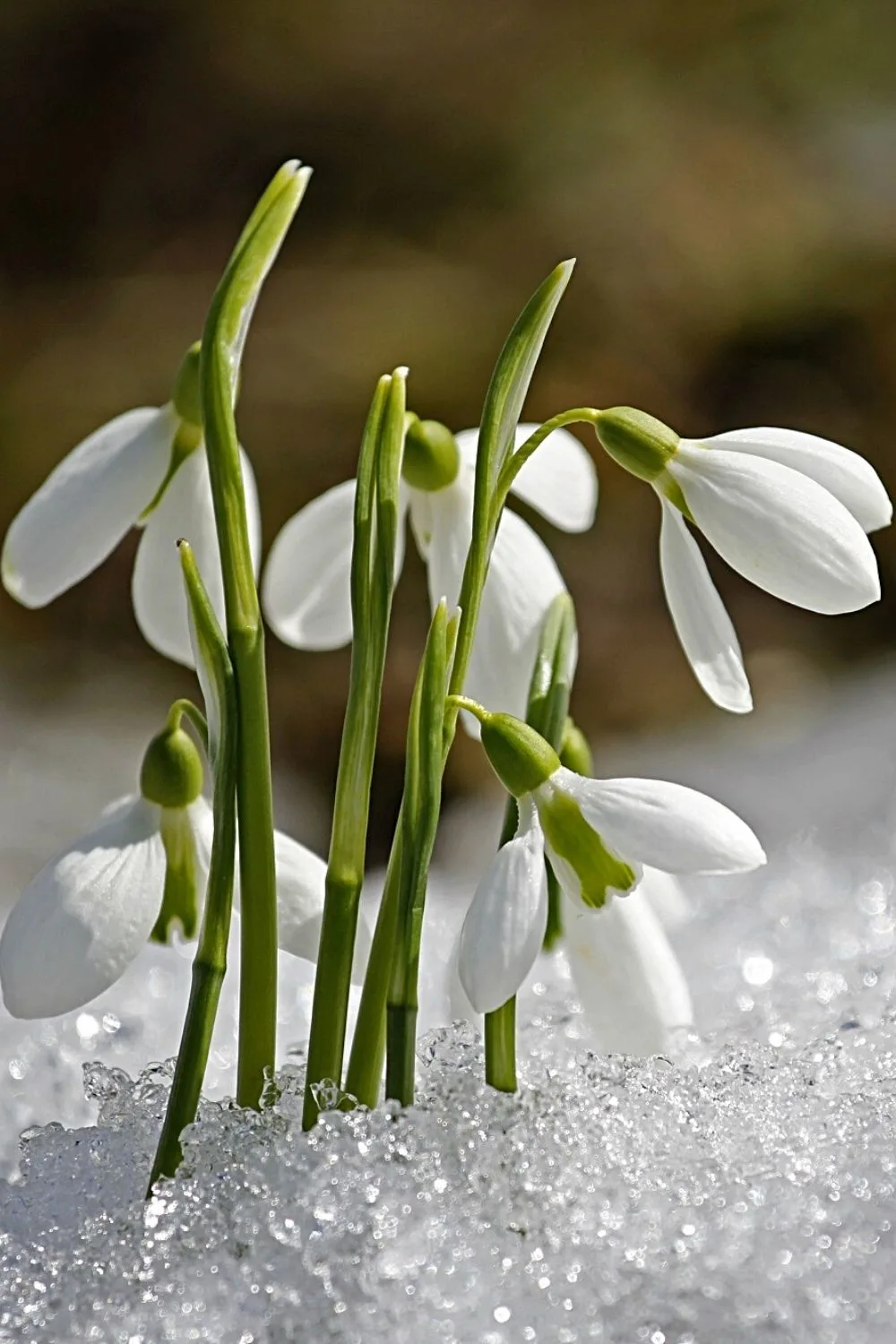
Snowdrops’ blooms can first appear even if the ground in your northeast-facing garden is still covered in snow
This plant will grow the first blooms in your spring garden, and make sure you plant them in groups of 10 or 15.
The delicate white flowers can also start appearing while the ground’s still covered in snow.
The stalk will reach a maximum height of 6 inches, whereas the bell-shaped flowers are 1 inch in length and greyish green leaves are 4 inches.
Please remember that this beautiful-looking plant is toxic for pets and humans.
- Family: Amaryllidaceae
- Other names: Galanthus Nivalis
- USDA hardiness zones: 3-7
- Light: grows under partial shade as well as full sun
- Soil: loamy or sandy, fast-draining soil
- Common issues: grey mold
- Growth rate: slow-growing
20. Hydrangea Integrifolia
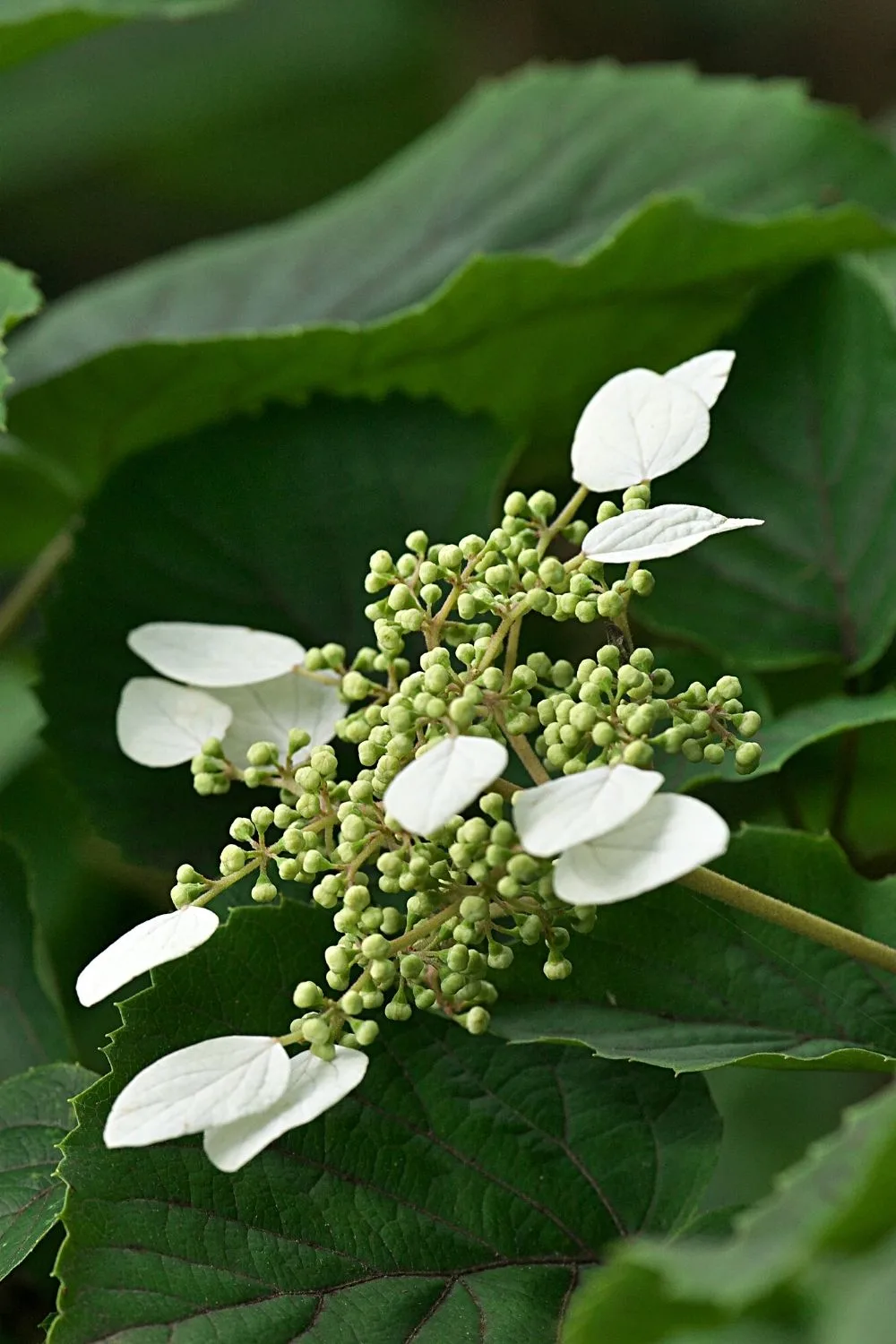
The fluffy blooms of the Hydrangea Integrifolia are an eye-catcher for your northeast-facing garden
If you love flowering plants, you definitely need a hydrangea variety in your outdoor garden.
The fluffy flowers on these can grab anyone’s attention. They enjoy evenly moist soil throughout the year except in the winter months.
This ornamental variety has 6 inches long glossy green leaves that showcase tiny white flower clusters. The blooms will attract wildlife like bees and butterflies to your garden.
If you want to enhance the blooming period, you should plant them in a shaded, cold spot.
- Family: Hydrangeaceae
- Other names: Evergreen Climbing Hydrangea
- USDA hardiness zones: 7-9
- Light: thrives under partial shade or bright, indirect sunlight
- Soil: peat soil mixed with compost and leaf litter
- Common issues: bacterial wilt, bud blight
- Growth rate: slow-growing
21. Impatiens
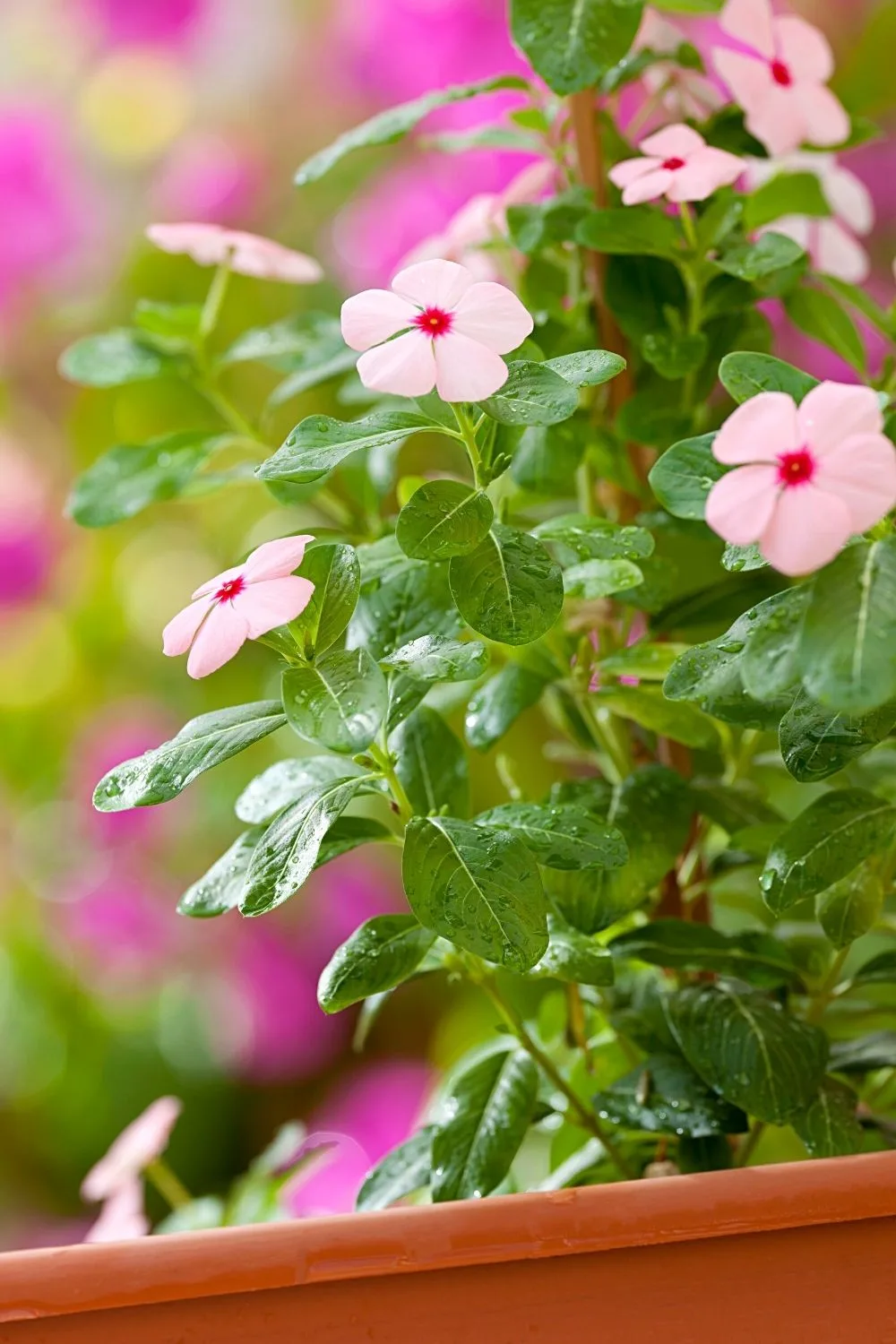
With its long-blooming season, Impatiens is a popular choice to decorate shaded areas like in your northeast-facing garden
These bedding plants grow into small bushes filled with colorful flowers.
These are a popular choice for decorating shaded spots in the garden since they have a long blooming season.
Make sure you plant a disease-resistant variant to avoid any fungal issue or disease in the garden.
These annual flowers will produce blooms in shades of white, pink, red, purple, blue, etc. Hence, if your Impatiens isn’t blooming, better start investigating.
If you are looking for a short plant, try Walleriana, which reaches a maximum height of 1 ft.
- Family: Balsaminaceae
- Other names: Touch me not, Jewel Weed
- USDA hardiness zones: 10-11
- Light: partial or full shade but can also tolerate a sunny spot
- Soil: nutrient-rich but well-draining with a pH of 6-6.5
- Common issues: fungal blight, powdery mildew
- Growth rate: fast growers
22. Mint
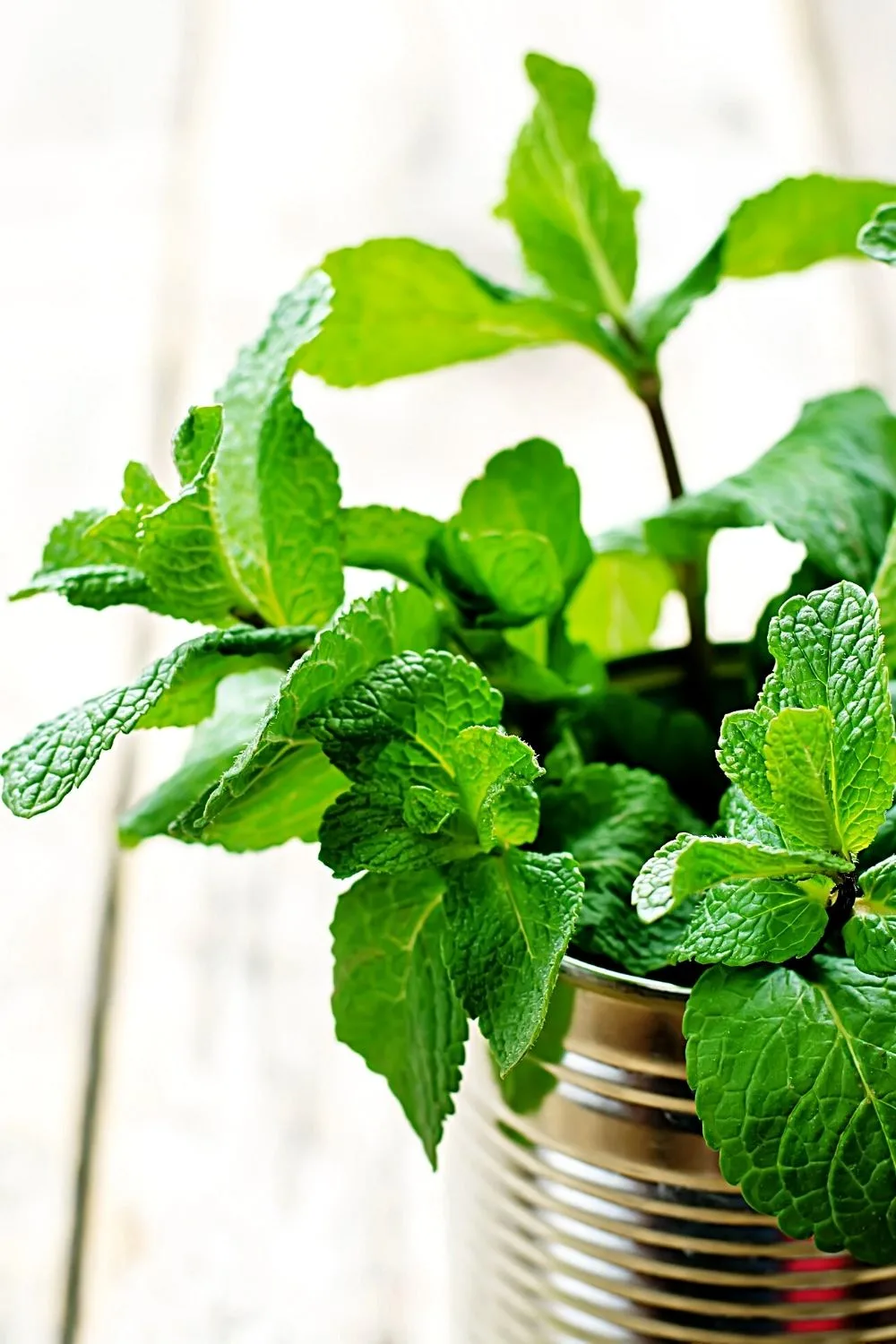
Aside from being an edible herb, the Mint’s flowers also attract pollinating insects to your northeast-facing garden
The spicy fragrance and green leaves of mint will freshen up your garden.
Mint is not just an edible herb, but the summer blooms on this plant will also attract pollinating insects.
- Family: Lamiaceae
- Other names: Mentha
- USDA hardiness zones: 3-11
- Light: grows just fine under partial light
- Soil: loamy soil
- Common issues: rust, spider mites, whiteflies
- Growth rate: slow-growing
23. Lettuce
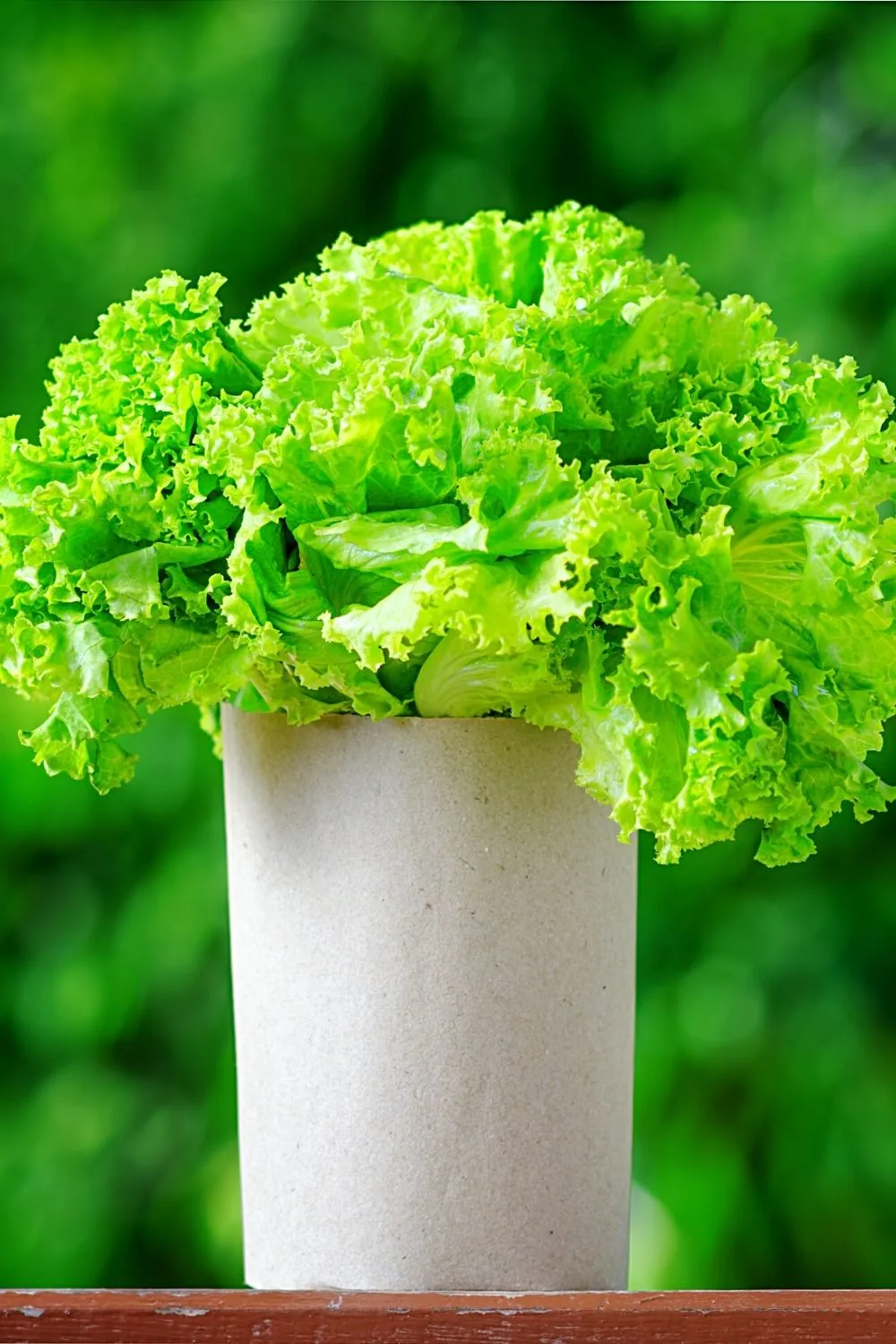
When you grow Lettuce in your northeast-facing garden, it can provide you with a steady supply of crispy, flavorful leaves for your salads
Homegrown lettuce provides crispy, flavorful leaves for your salads.
Lettuce will be ready for harvest within a few weeks, and you will have multiple harvests with a single plant.
- Family: Asteraceae
- Other names: Garden lettuce
- USDA hardiness zones: 2-11
- Light: Full sunlight but also grows under partial light
- Soil: well-drained soil to avoid rotting
- Common issues: Powdery mildew, downy mildew, aphids
- Growth rate: fast-growing
24. Kale
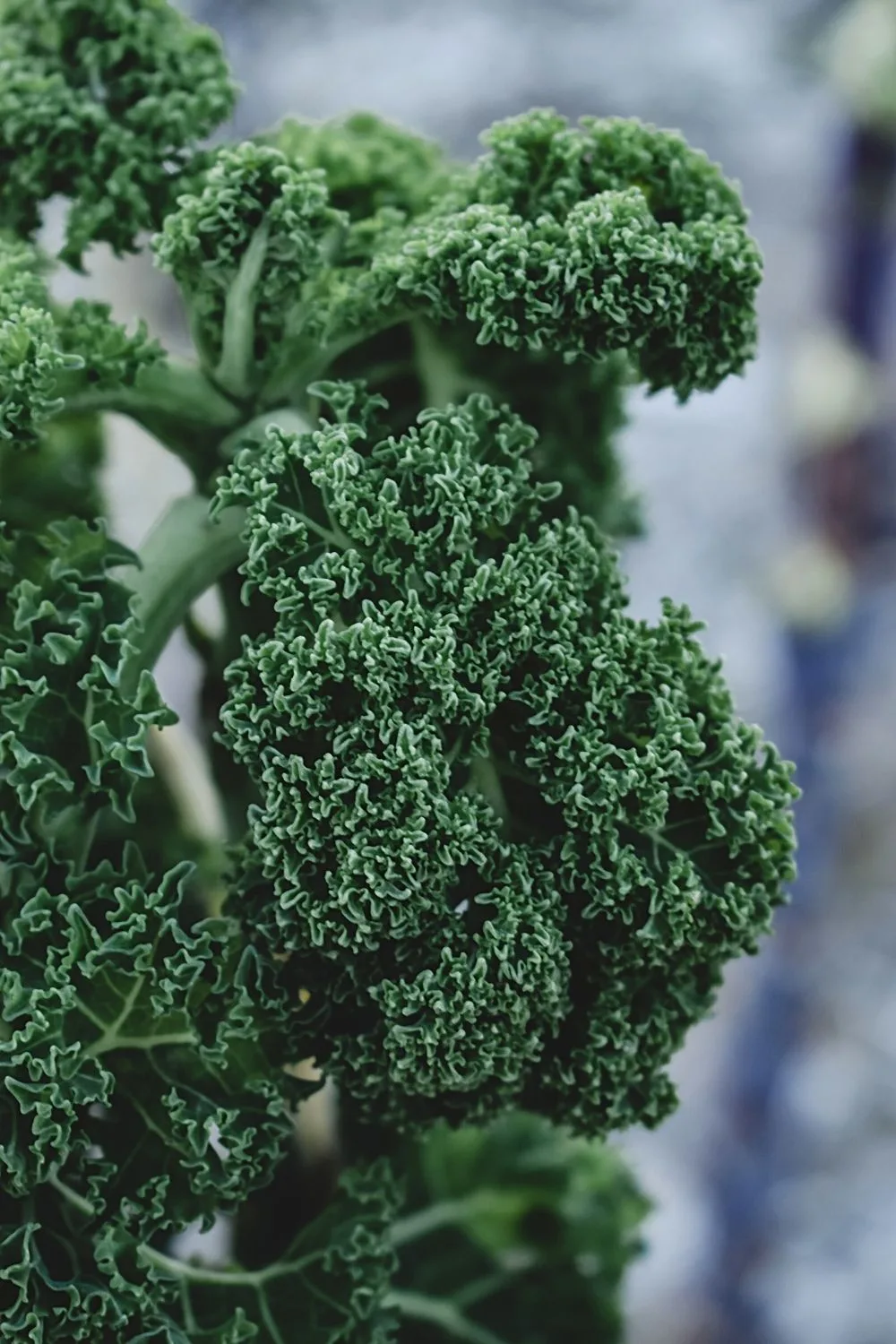
Kale is not only a leafy vegetable, but it also is an ornamental plant you can grow in your northeast-facing garden
Although Kale is a leafy green vegetable, it is also considered an ornamental plant. This means you can enjoy the looks of Kale until it’s ready for harvest.
This vegetable will be ready for consumption within two months.
The curly varieties are a better choice for cold, shaded spots.
- Family: Brassicaceae
- Other names: Brassica Oleracea, Ornamental Kale
- USDA hardiness zones: 7-9
- Light: full or partial sunlight
- Soil: loamy but moist soil
- Common issues: slugs, aphids, black rot
- Growth rate: fast grower
25. Spinach
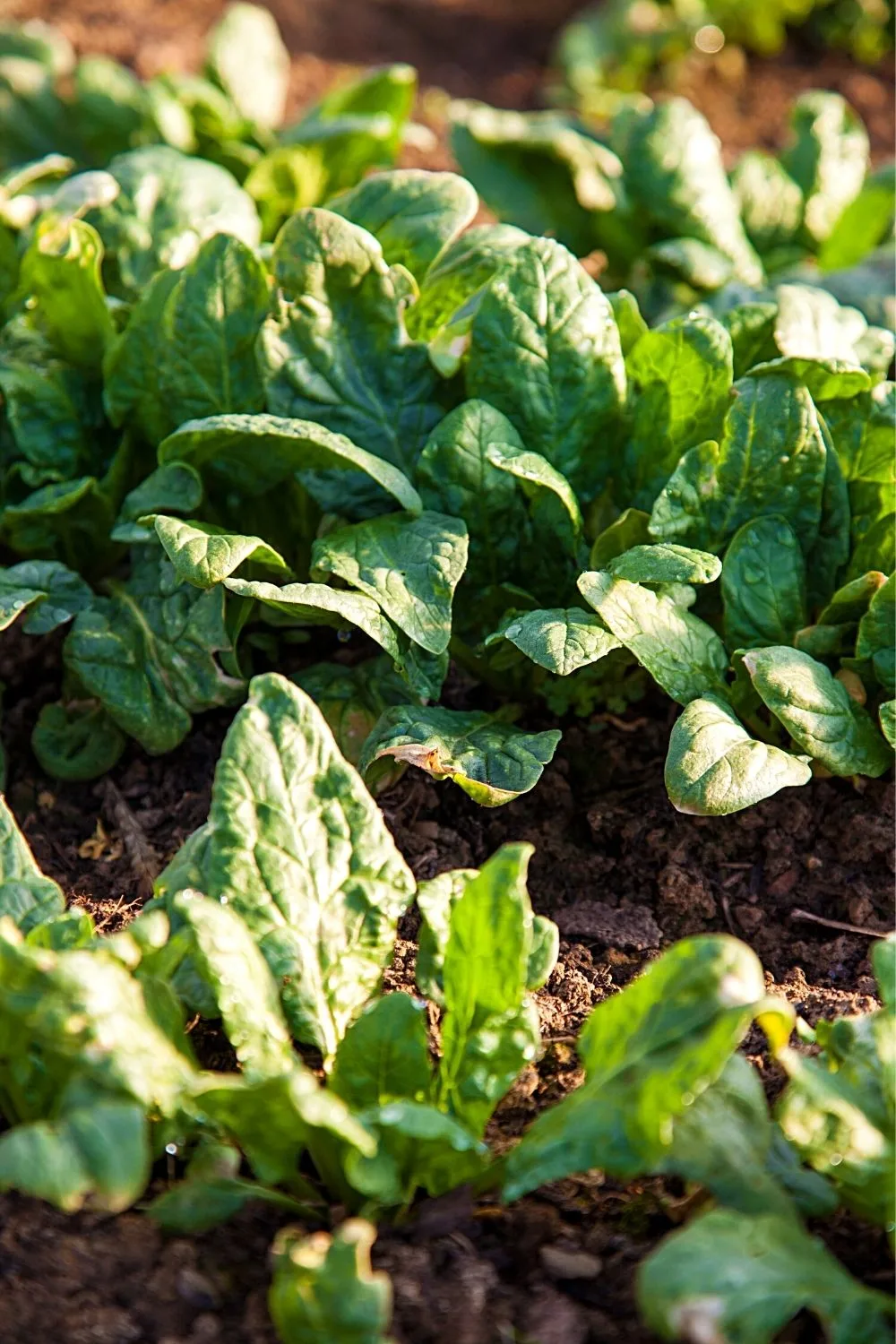
Spinach is a cold-weather plant that you can grow in your northeast-facing garden
This leafy green plant is a cool-weather crop meaning it thrives under cold conditions.
Therefore, it should be planted in fall or spring. Mature spinach leaves measure about 12 inches in length.
- Family: Amaranthaceae
- Other names: Spinacia Oleracea
- USDA hardiness zones: 2-11
- Light: outdoor spots with partial or full sun
- Soil: garden soil rich in organic matter with fast drainage
- Common issues: downy mildew, aphids
- Growth rate: fast grower
26. Oregano
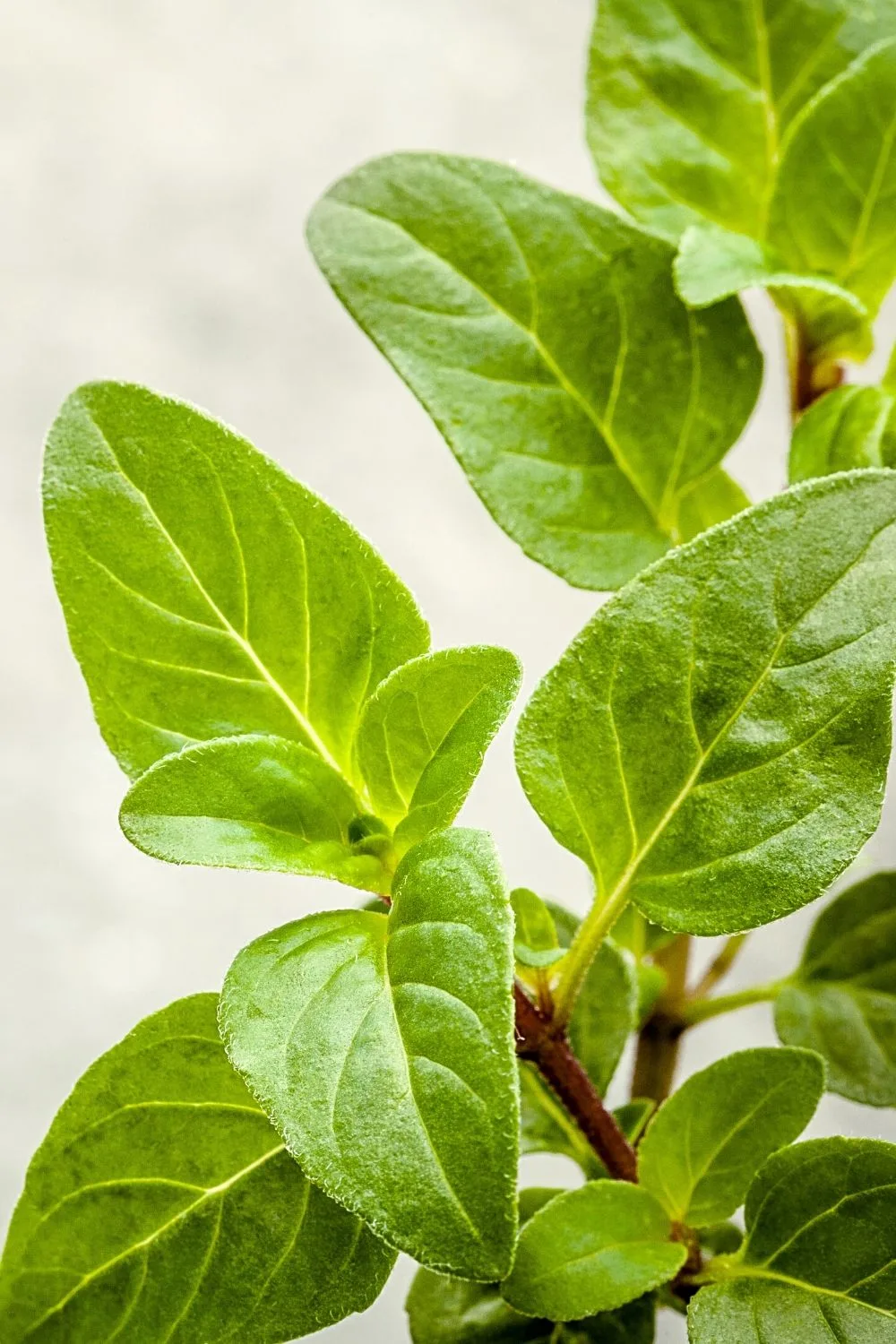
Oregano is a common herb flavor in several cuisines that you can grow in your northeast-facing garden
This is a common herb flavor in several cuisines.
Oregano is a hardy herb that will thrive in a container as well as in your outdoor garden.
The growing conditions can impact the flavor of this Mediterranean herb.
- Family: Lamiaceae
- Other names: Origanum Floridum
- USDA hardiness zones: 4-10
- Light: partial shade or full sun
- Soil: dry or slightly moist soil
- Common issues: aphids, spider mites
- Growth rate: Moderate
27. Broccoli
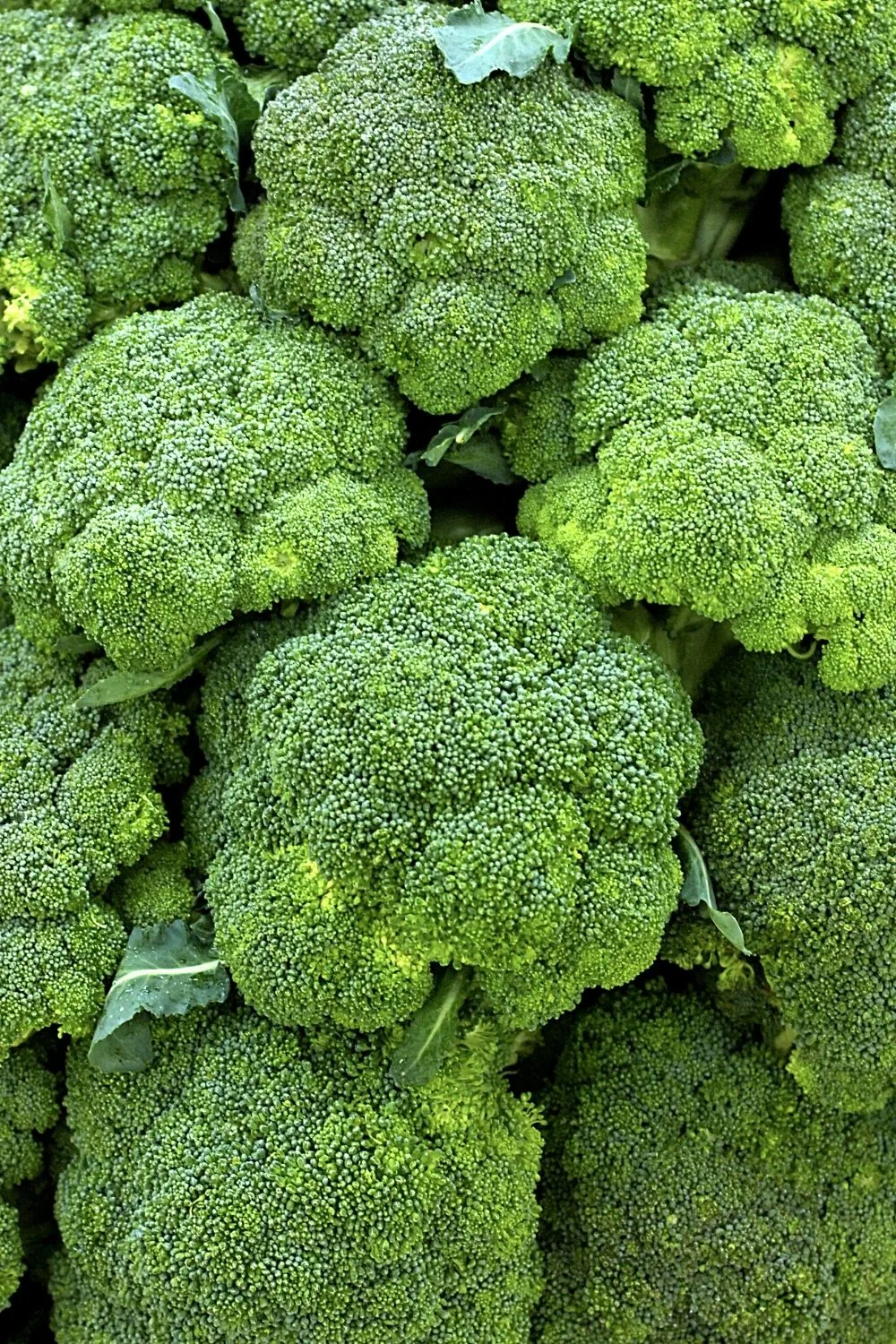
You can grow Broccoli’s green and purple varieties in your northeast-facing garden
This edible plant is a member of the cabbage family, and it originated in Italy several hundred years ago.
Luckily today, you can grow it in your backyard and enjoy both green and purple varieties.
Broccoli is one of the few green plants that have a long harvest season which makes it economical for home growers. It will also produce yellowish-green flowers.
- Family: Brassicaceae
- Other names: Brassica Oleracea var. Italica
- USDA hardiness zones: 2-11
- Light: can be planted under partial shade in hot summers
- Soil: moist but well-draining loamy soil with lots of essential nutrients
- Common issues: aphids, black rot
- Growth rate: slow to moderate
28. Carrots
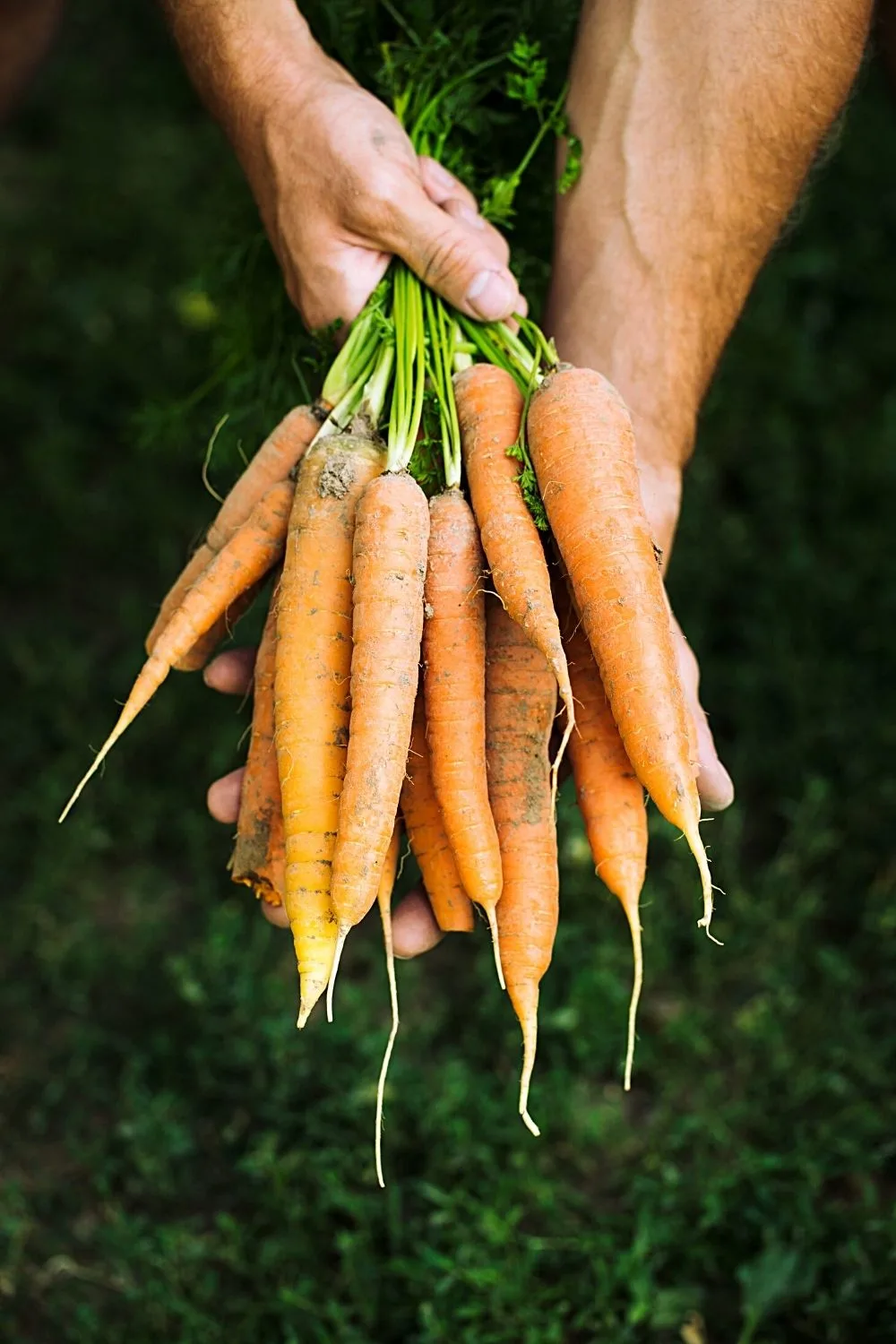
Carrots are great vegetables to grow in your northeast-facing garden
The most common type of carrots is the orange one but did you know that they come in different colors, including white, red, yellow, and black.
This root vegetable will thrive in cool weather; therefore, you can start the seeds in early spring.
This vegetable plant needs protection from the harsh afternoon sun, so select the location accordingly. Thus, investigate thoroughly in case you find your carrots not growing as they should be.
- Family: Apiaceae
- Other names: Daucus Carota
- USDA hardiness zones: 3-10
- Light: partially shaded or a sunny spot
- Soil: loose garden soil that can easily drain excess water
- Common issues: Nematodes
- Growth rate: 75 days after seed plantation
29. Cabbage
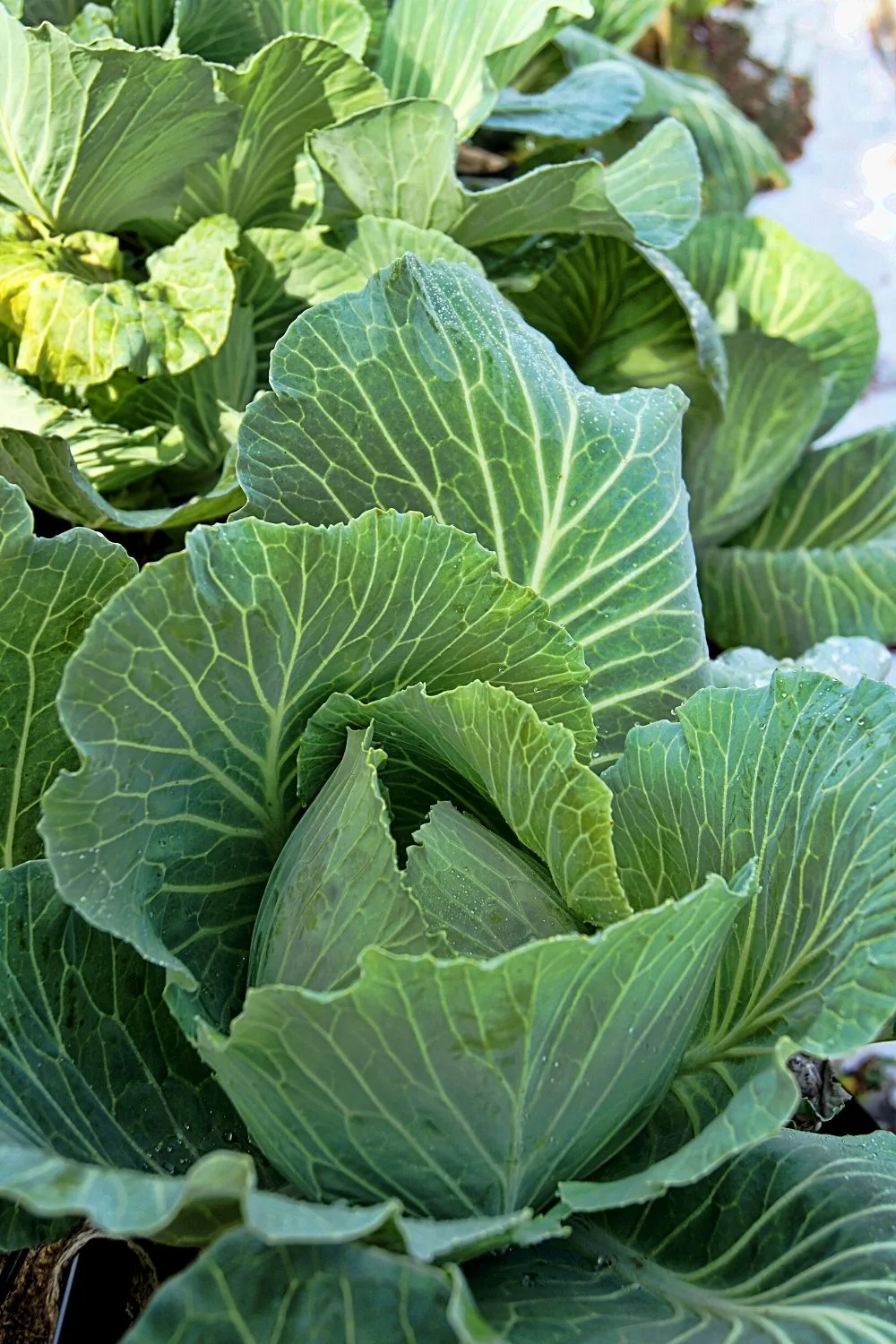
Despite being a challenging plant to grow, you can plant Cabbage in your northeast-facing garden
This cool-season crop will thrive in the mild temperatures of your shaded backyard.
They are a challenging plant that needs the right environment for prolific growth.
The only drawback is that cabbage might attract certain harmful pests to your garden; therefore, you should plant disease-resistant varieties.
- Family: Brassicaceae
- Other names: Brassica Oleracea
- USDA hardiness zones: 2-11
- Light: partial shade or full sun
- Soil: well-draining garden soil with plenty of nutrients
- Common issues: cabbage worms, aphids, downy mildew
- Growth rate: 4-6 months to mature
30. Plum Tree
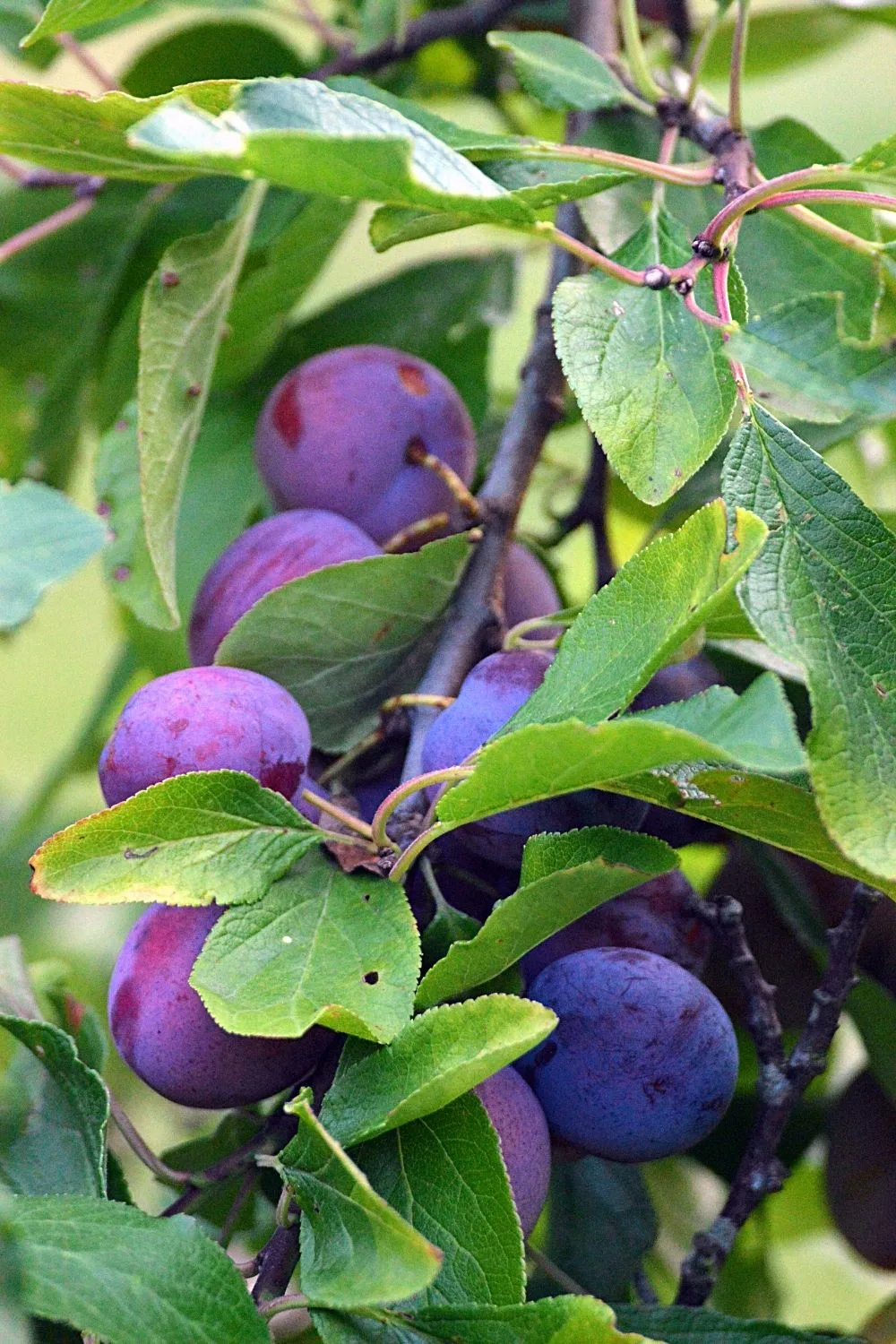
One fruit tree you can plant in your northeast-facing garden is the Plum Tree.
In addition to ornamental plants, vegetables, and herbs, you can also add a fruit tree to your shaded garden.
Most fruit trees need full sun for several hours to produce the fruit, but the Plum tree will grow under partial shade.
This tree will appreciate the morning sun available in a northeast-facing garden.
You can add these homegrown plums to your fruit cake or jam. Just choose the variety that will thrive in your garden.
- Family: Rosaceae
- Other names: Prunus Domestica, Common Plum
- USDA hardiness zones: 4-9
- Light: partial shade or in full sun
- Soil: loamy soil with fast drainage
- Common issues: bacterial leaf spot, root rot
- Growth rate: moderate
Conclusion About Plants for Northeast Facing Garden
We hope that you are ready to start your shaded garden with all the plants shared in this article.
Since the northeast-facing garden receives very less sunlight, it is important to regularly prune trees and shrubs in your garden to avoid blocking light for other smaller plants.

Daniel has been a plant enthusiast for over 20 years. He owns hundreds of houseplants and prepares for the chili growing seasons yearly with great anticipation. His favorite plants are plant species in the Araceae family, such as Monstera, Philodendron, and Anthurium. He also loves gardening and is growing hot peppers, tomatoes, and many more vegetables.

![30 Plants for Northeast Facing Garden — Best Guide [2024]](https://plantophiles.com/wp-content/uploads/2022/04/30-Plants-for-Northeast-Facing-Garden-720x405.jpg.webp)
